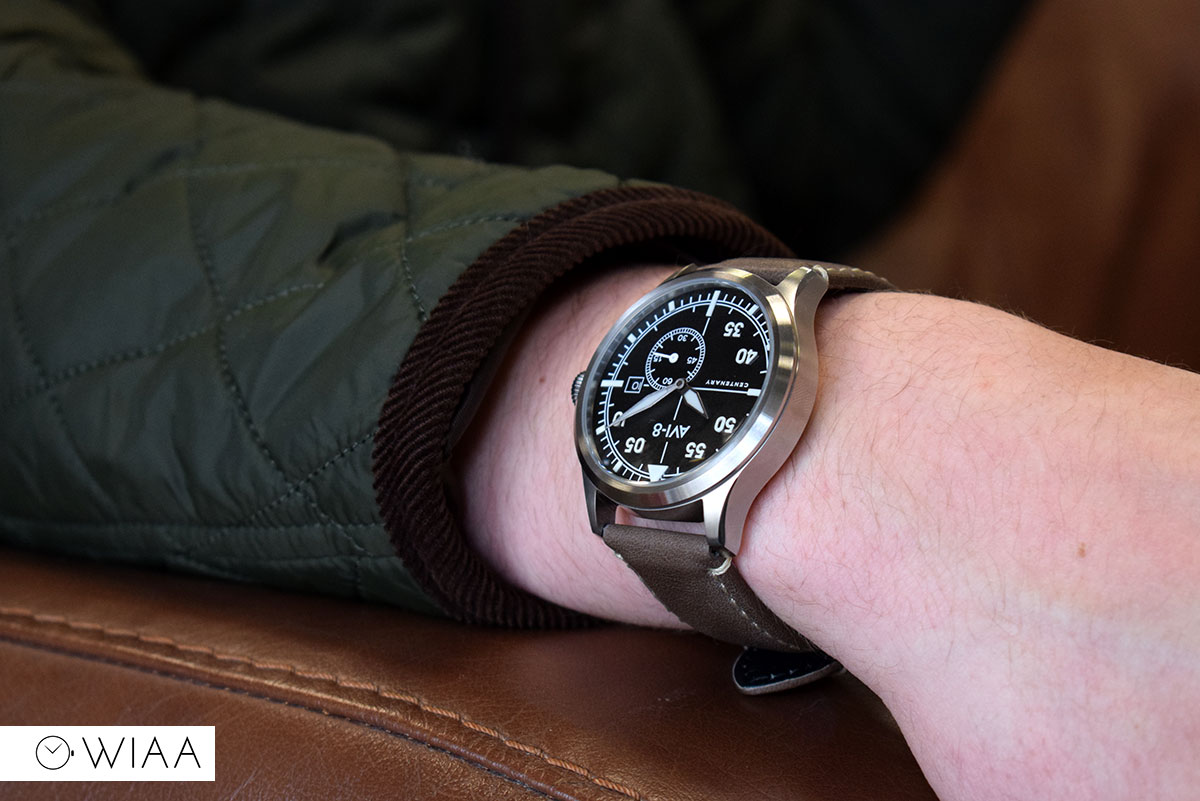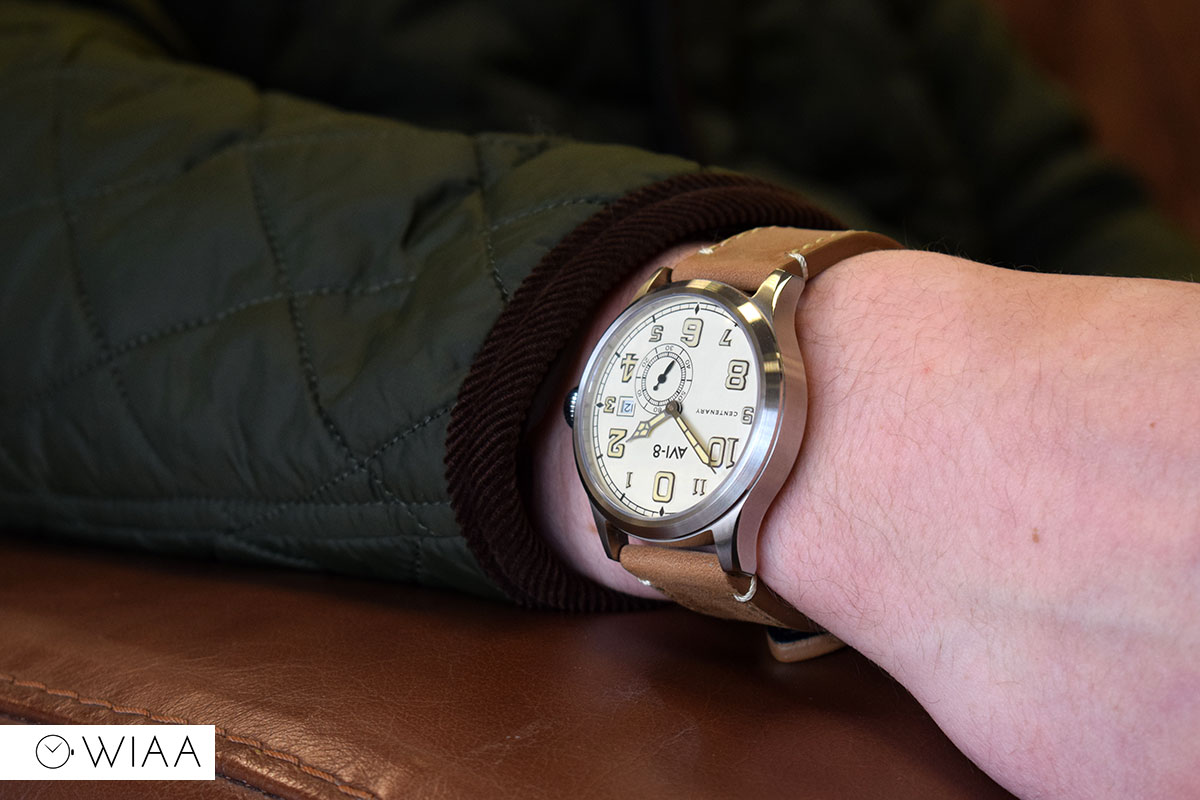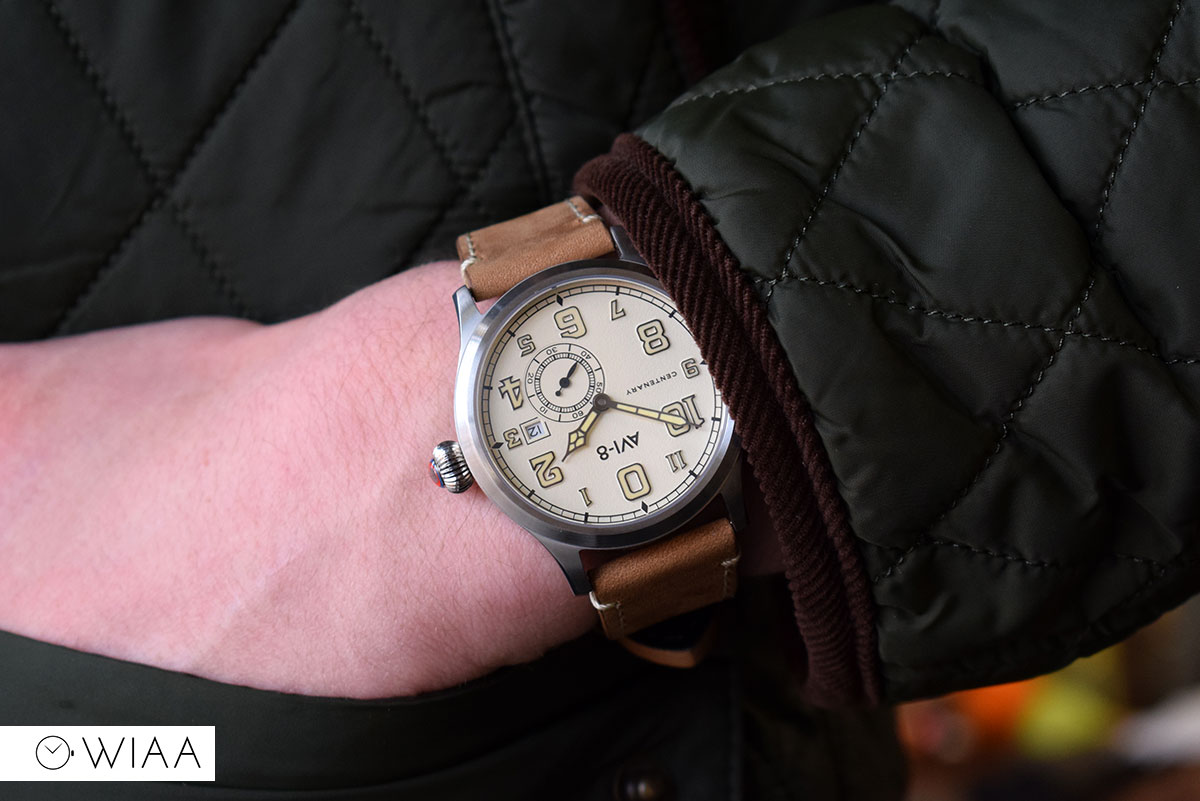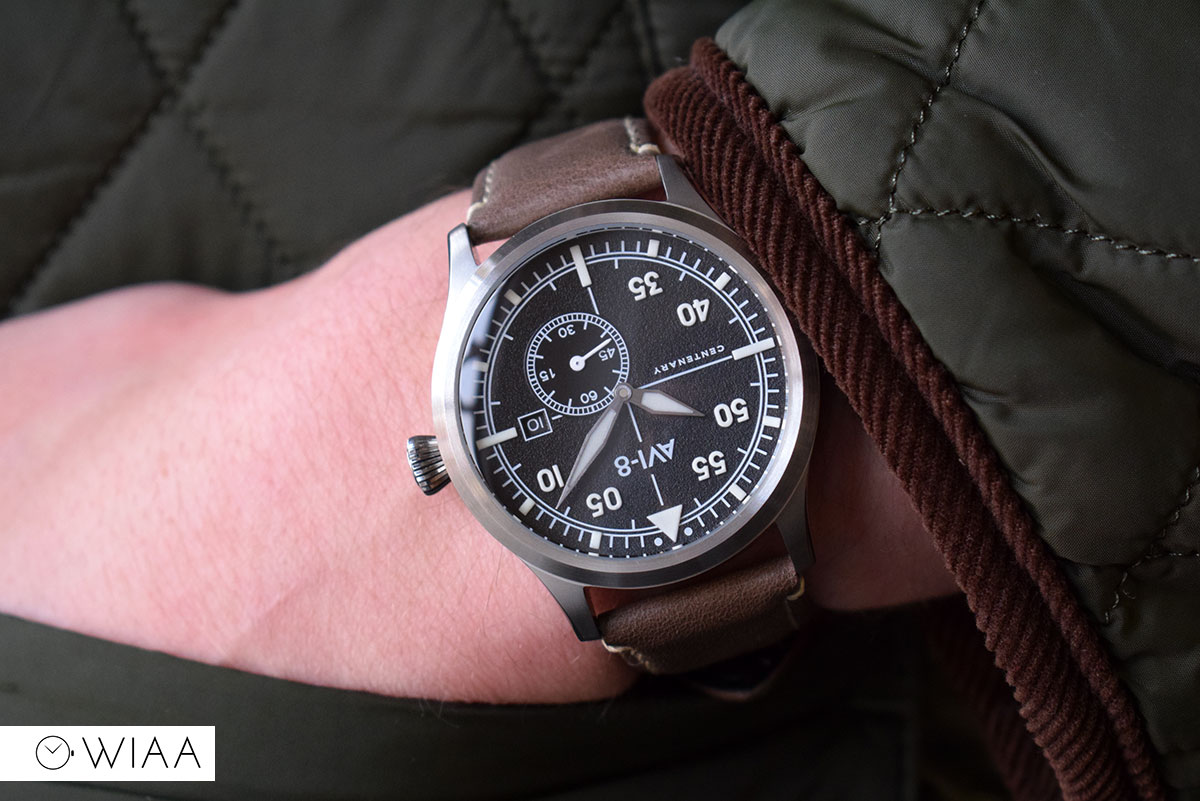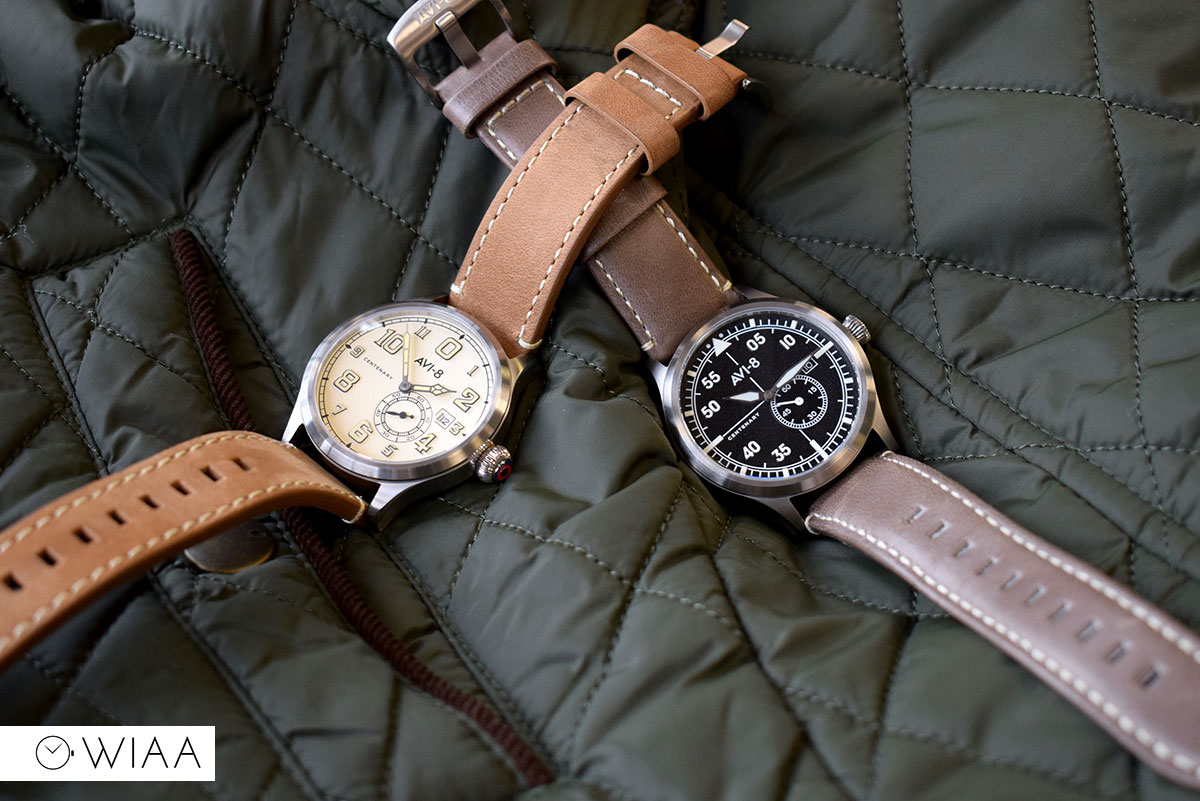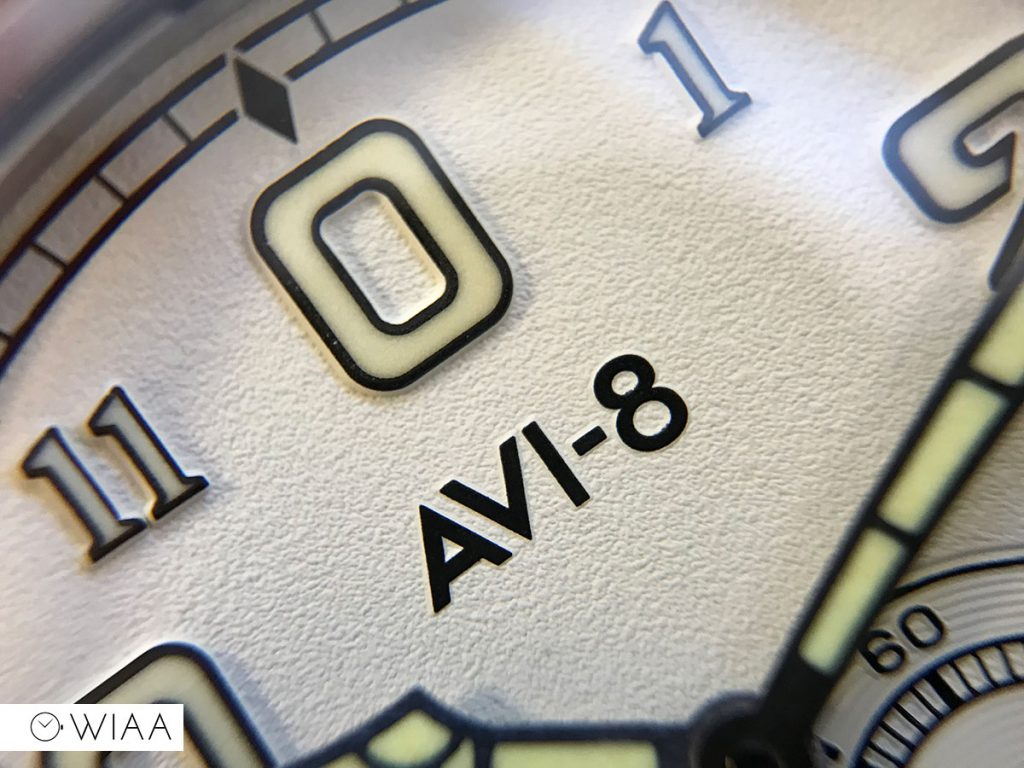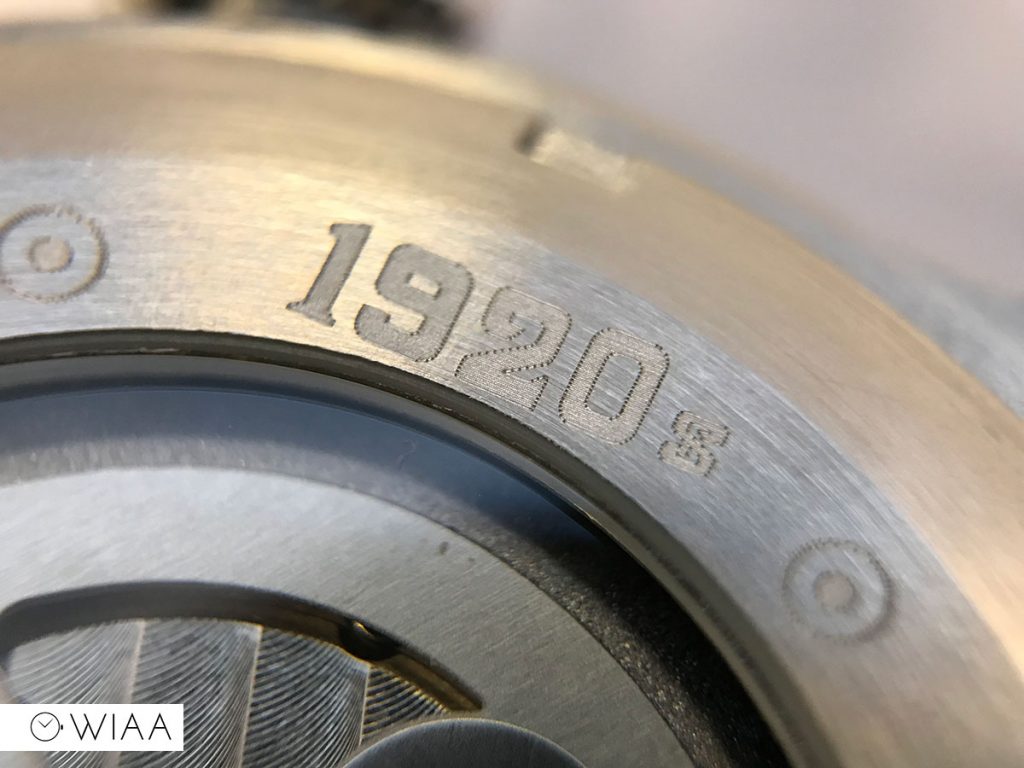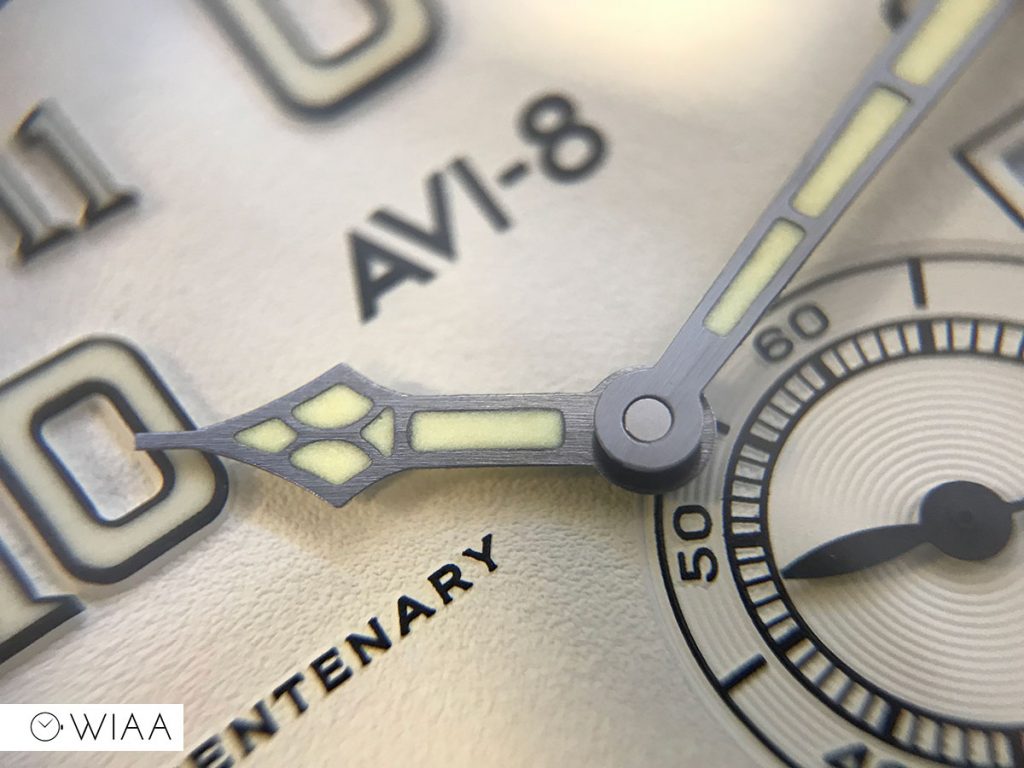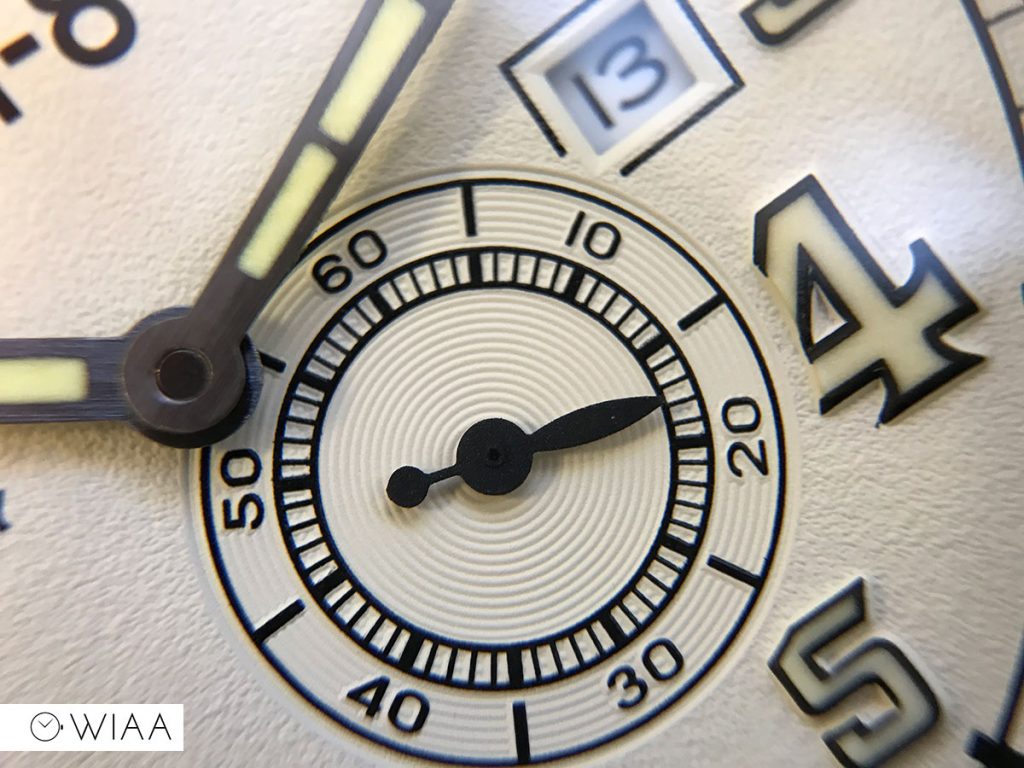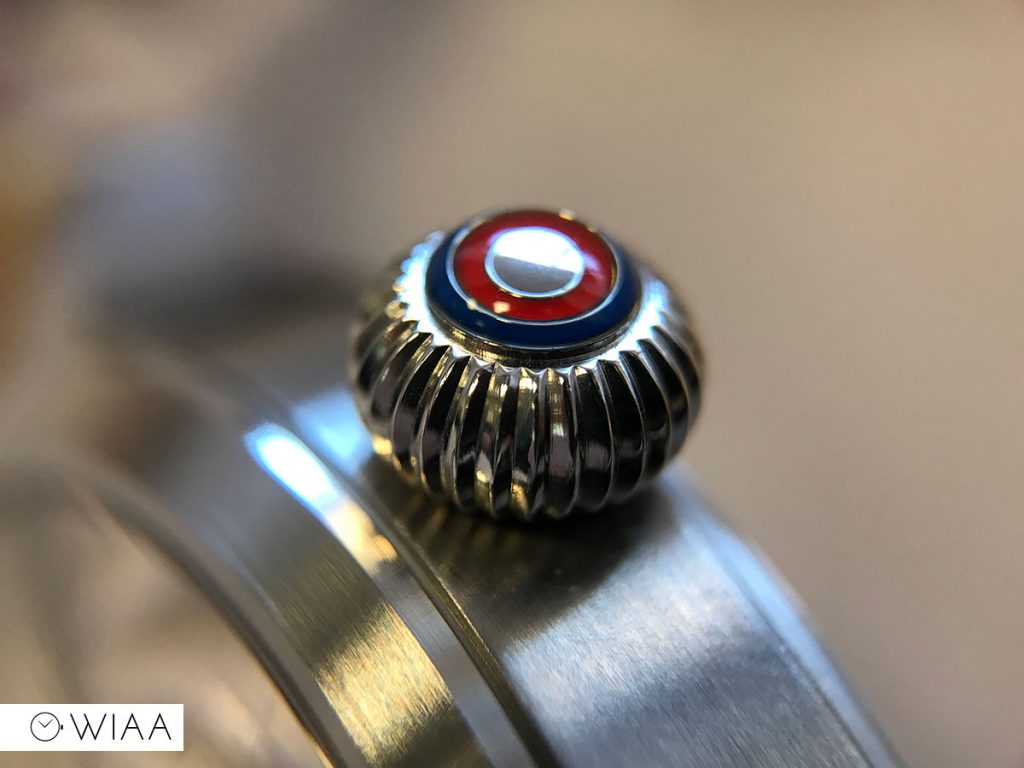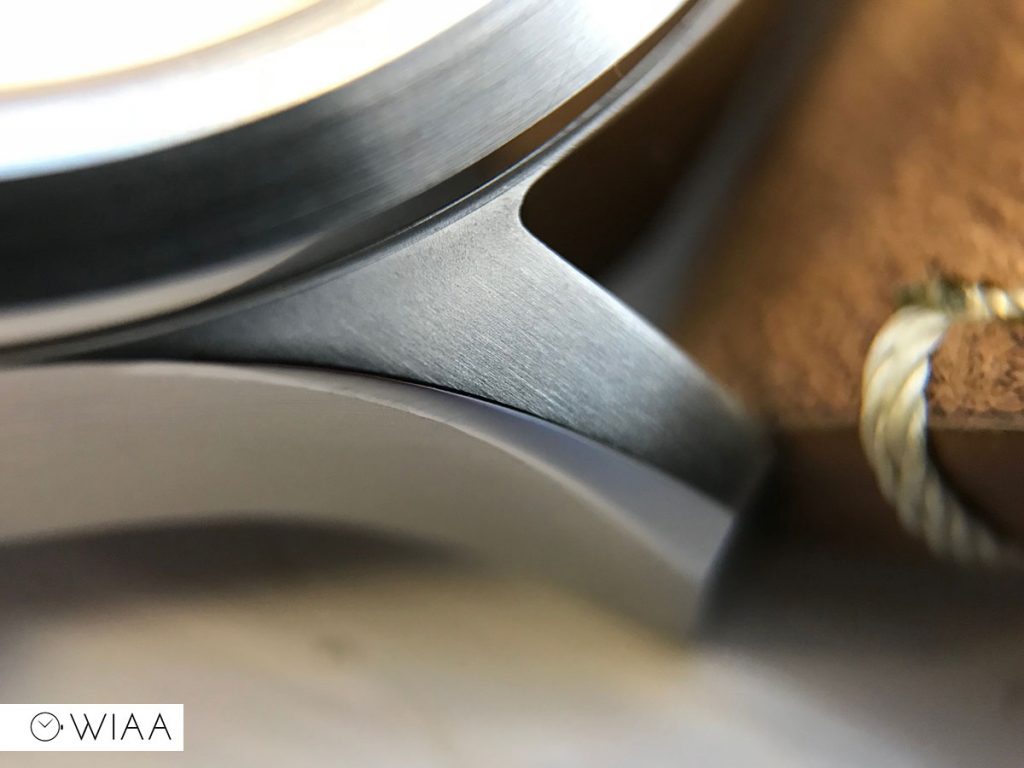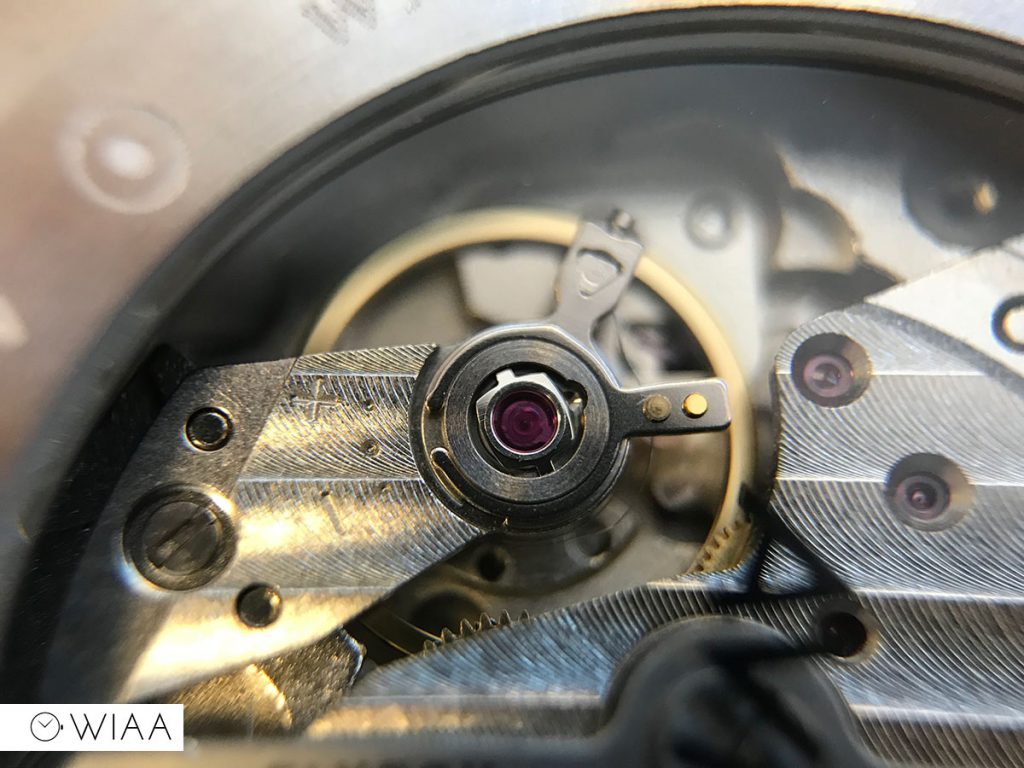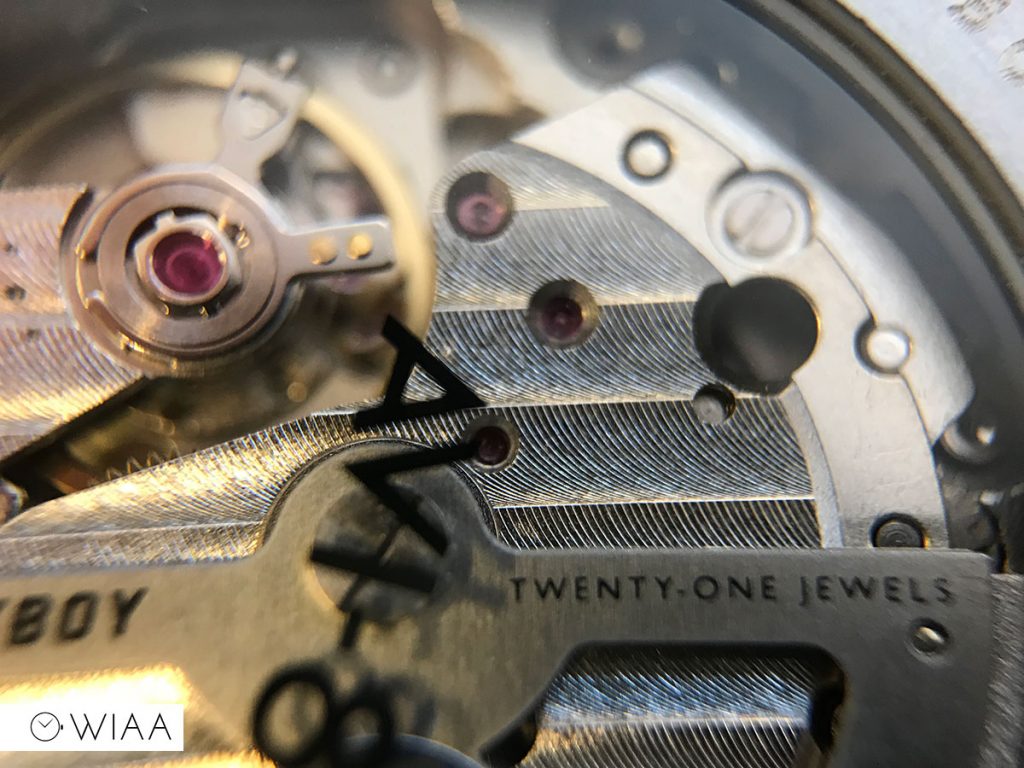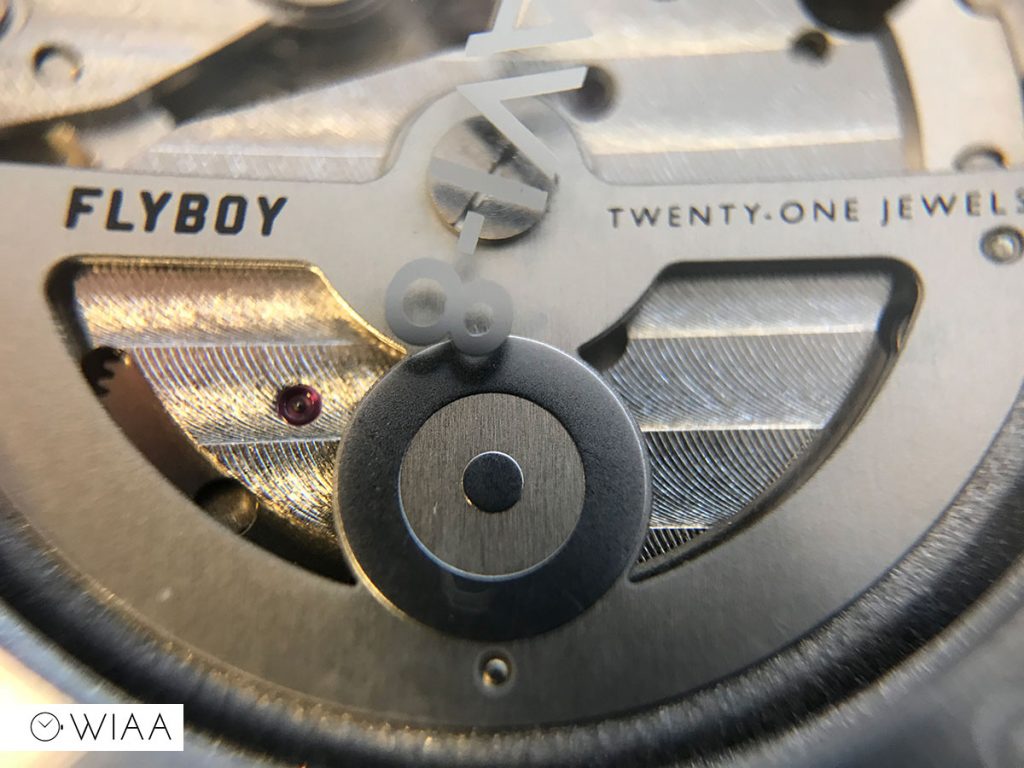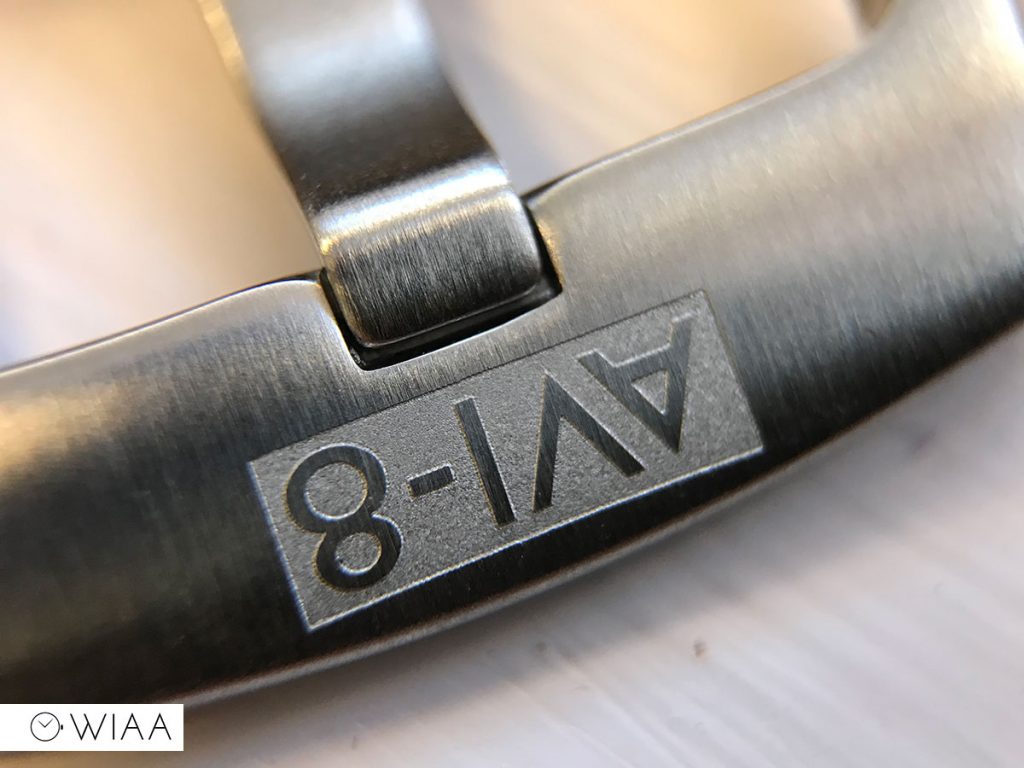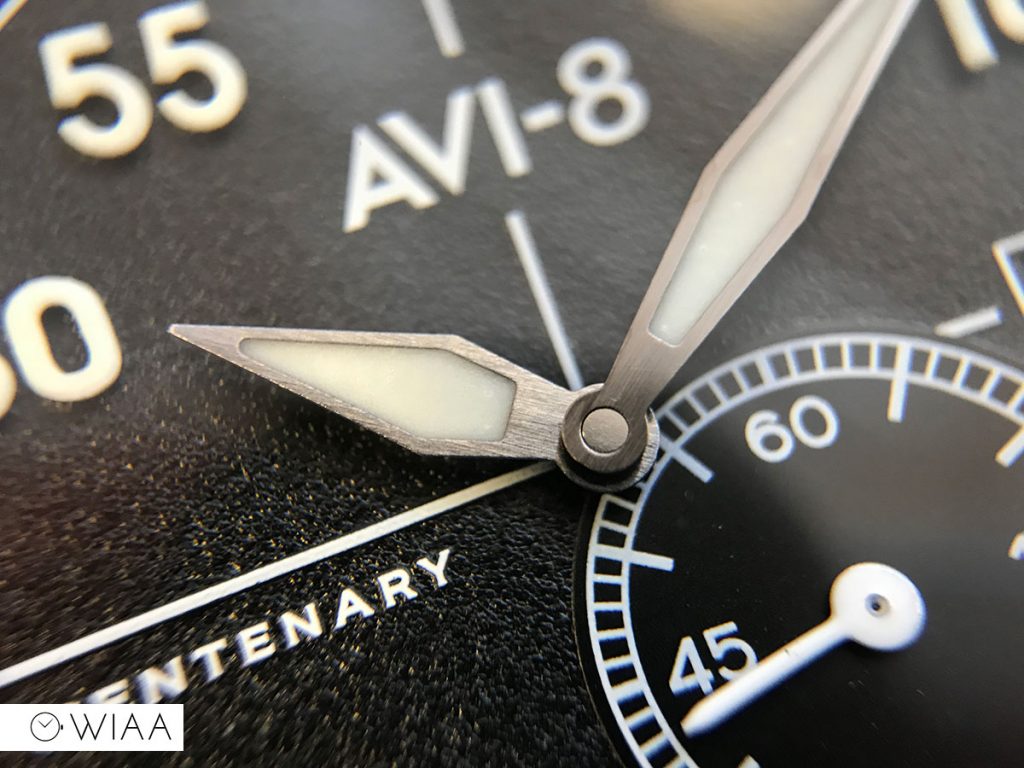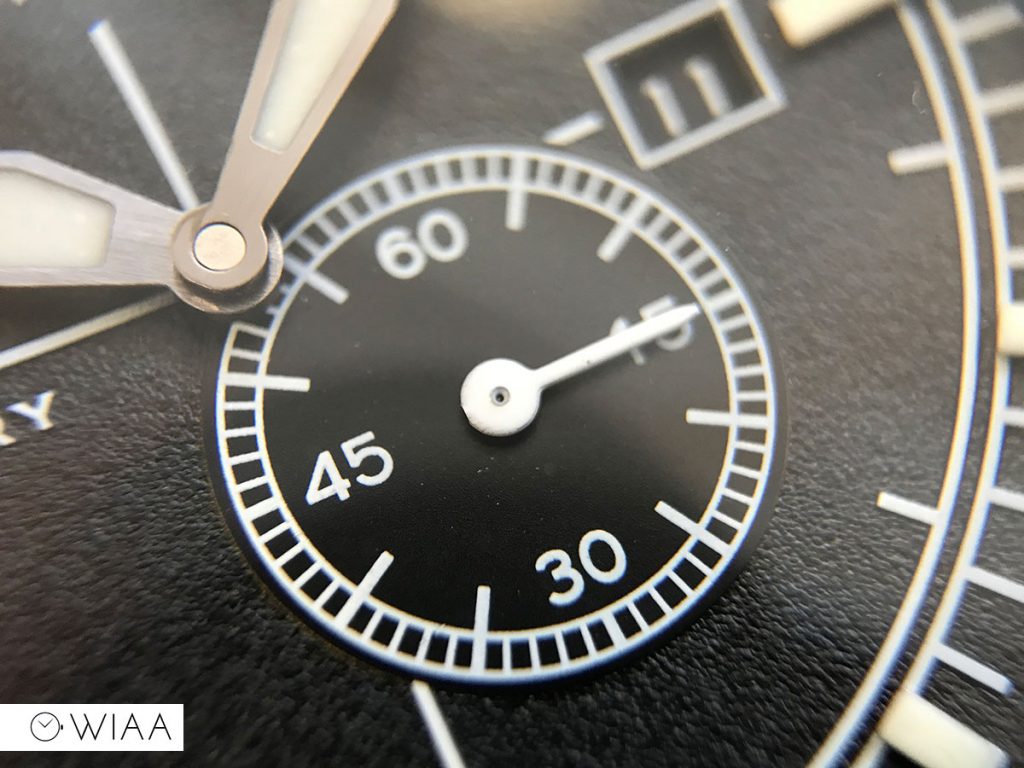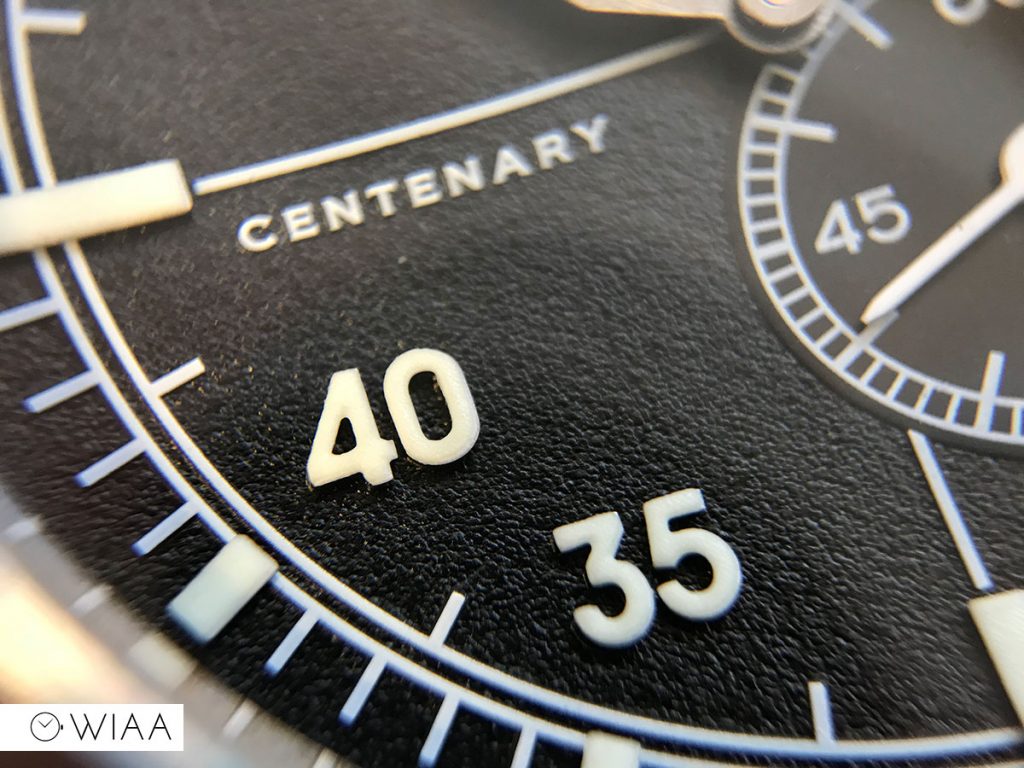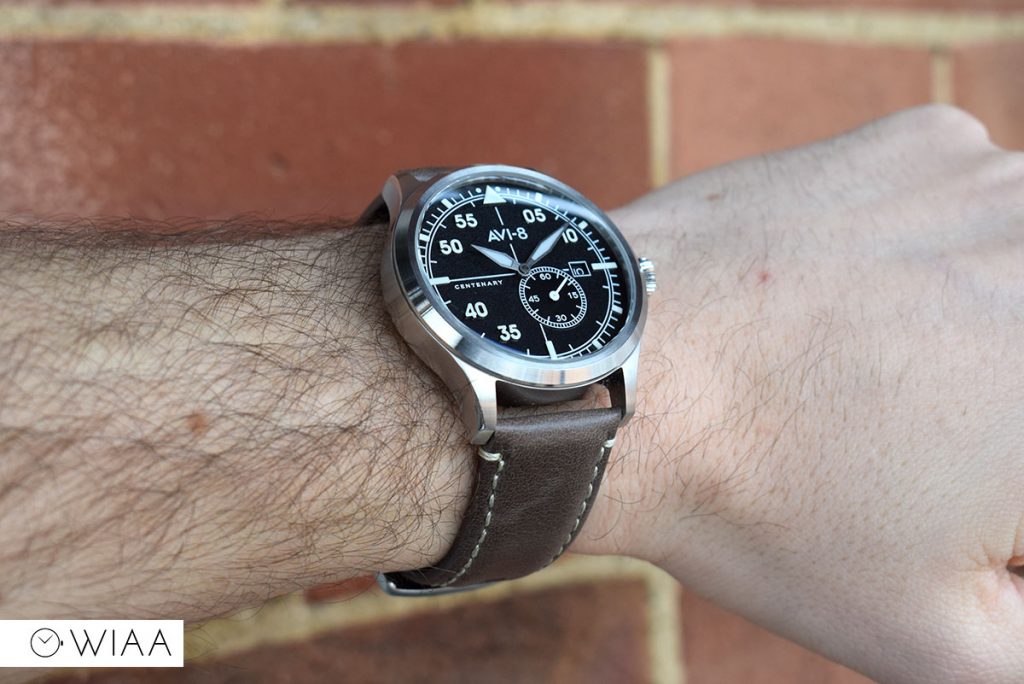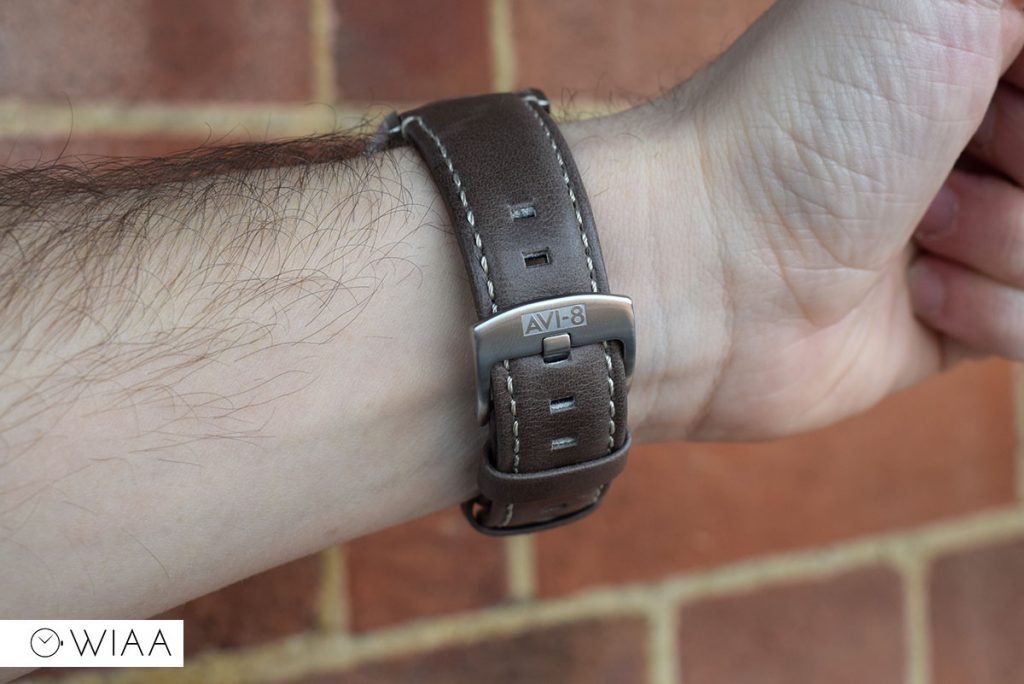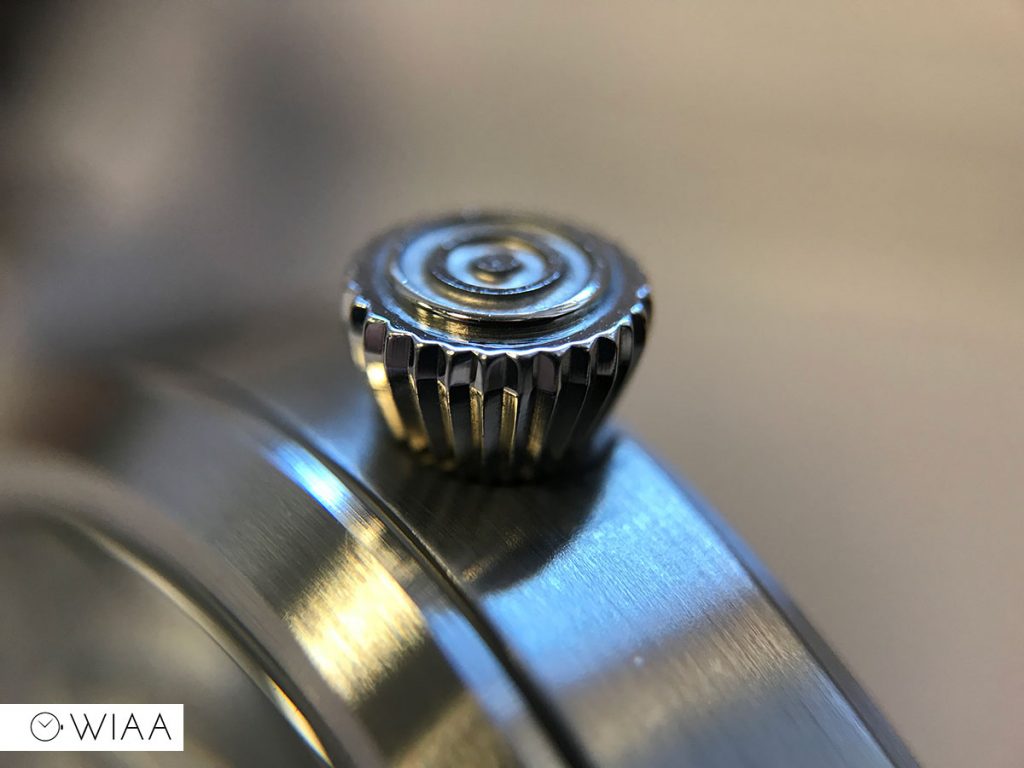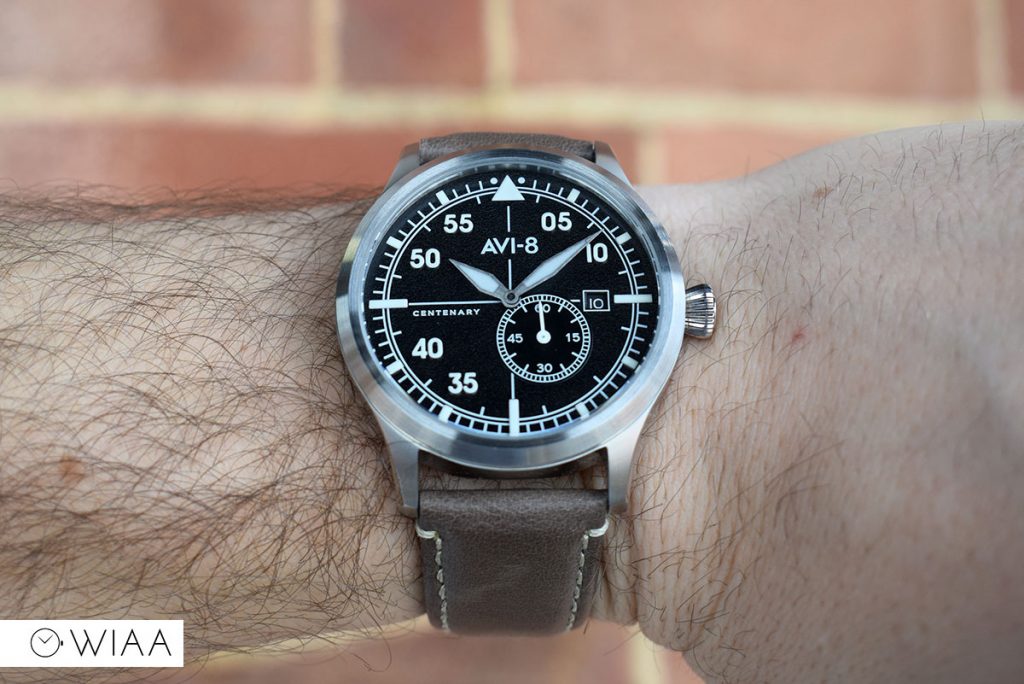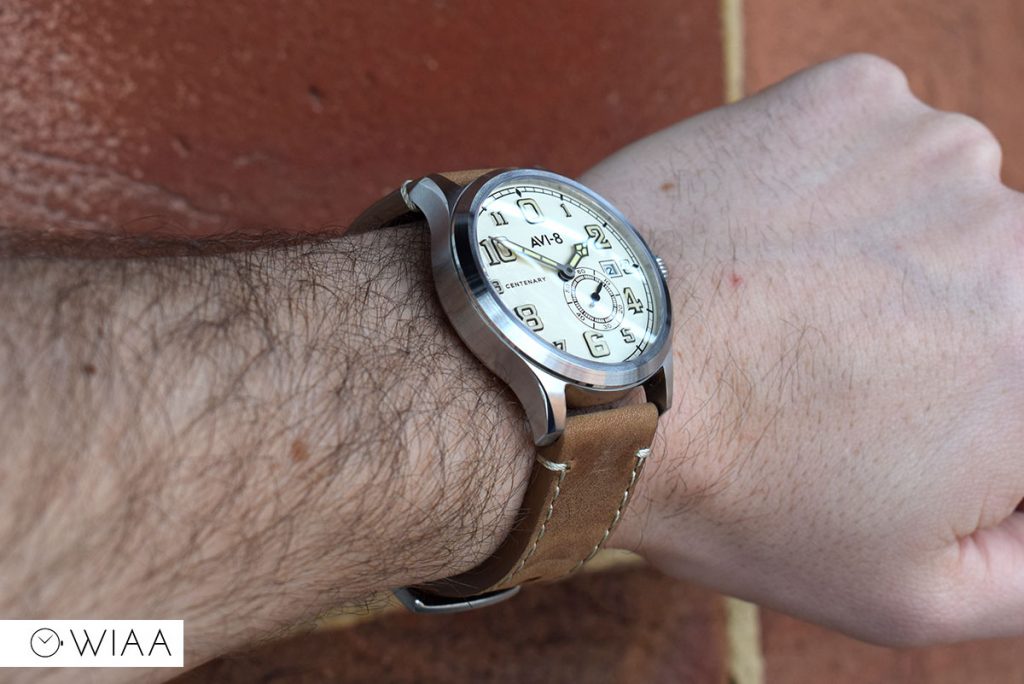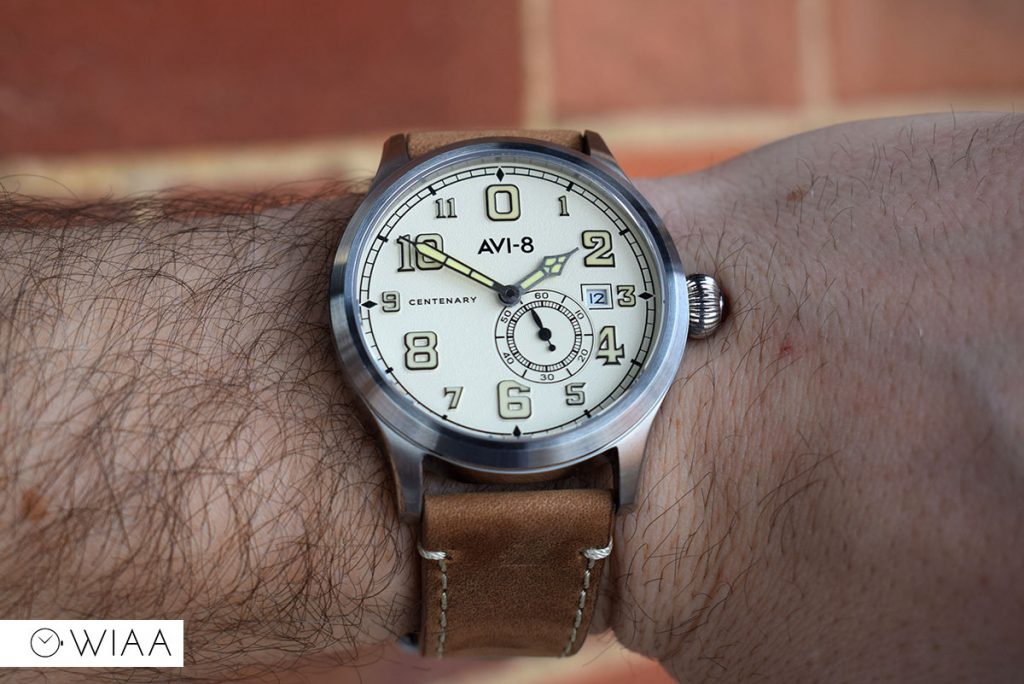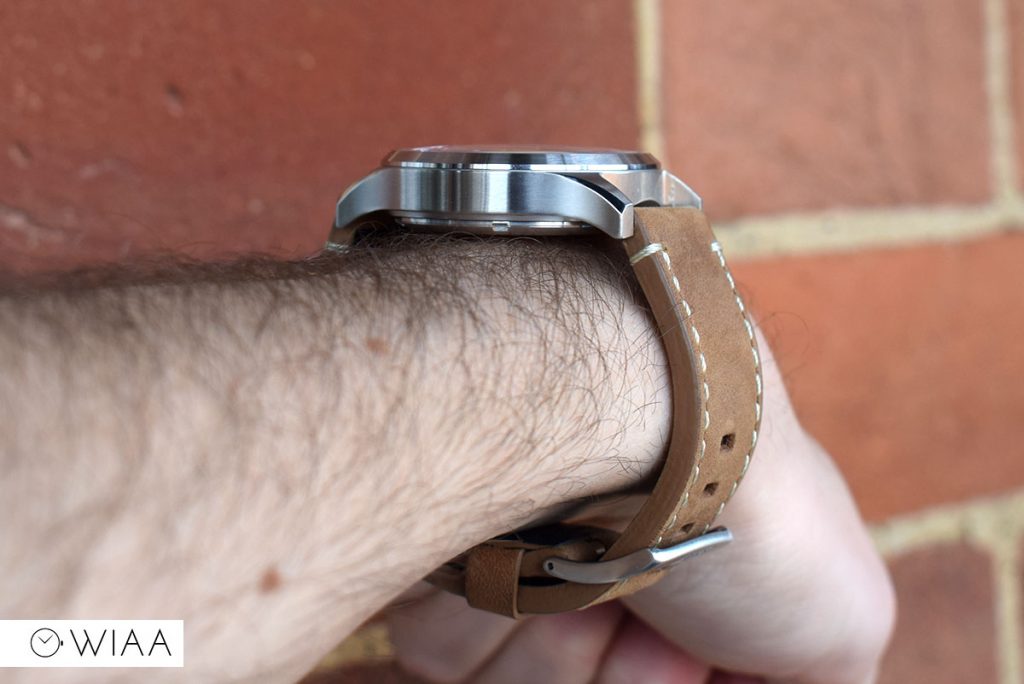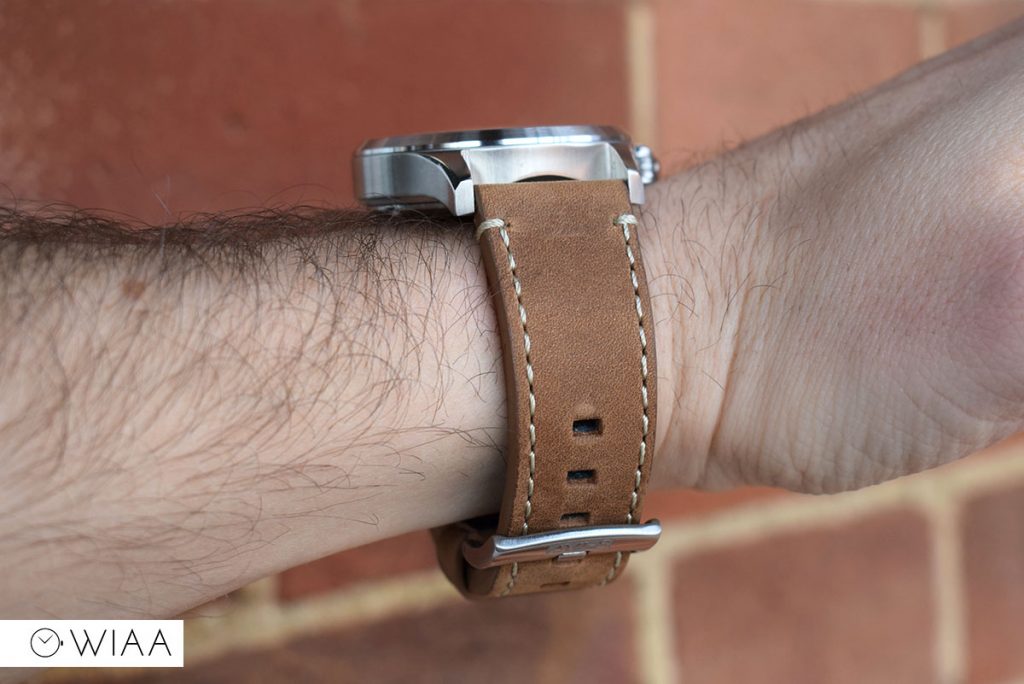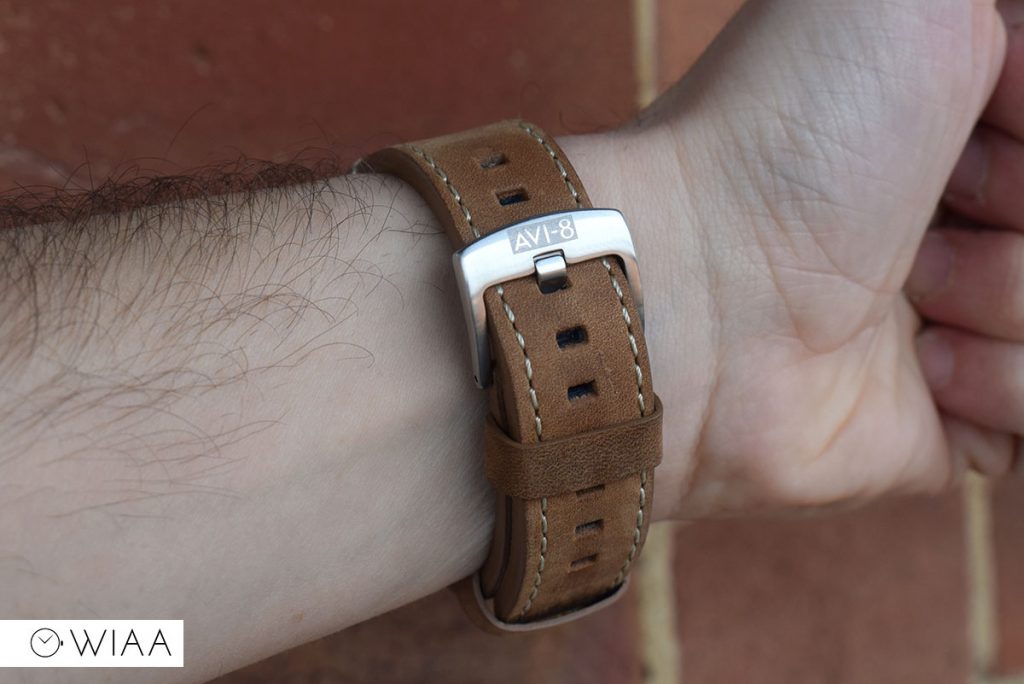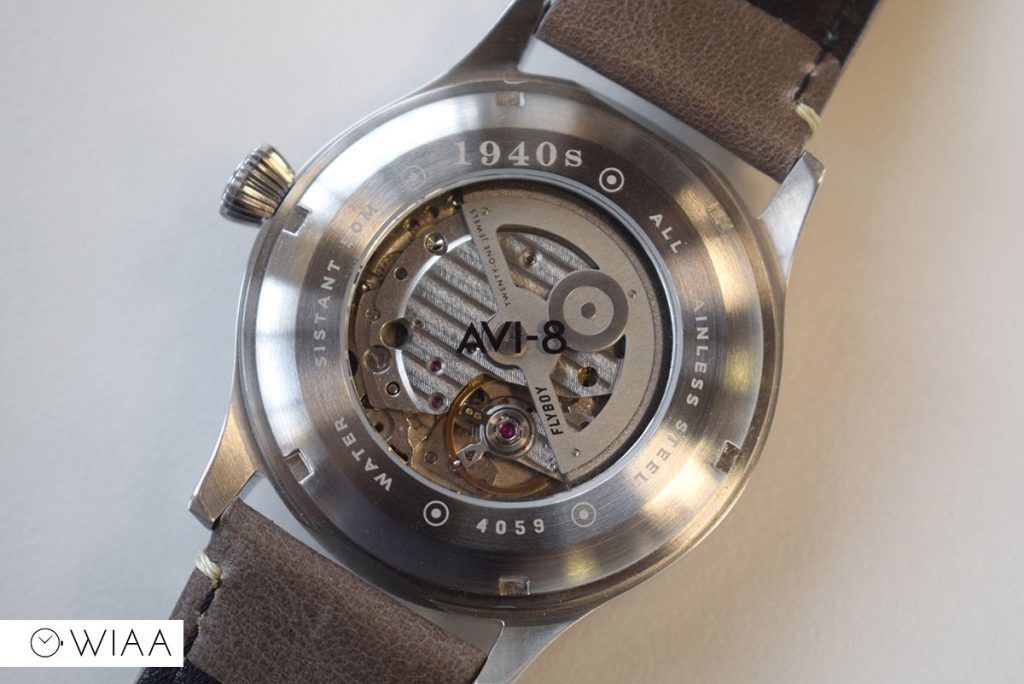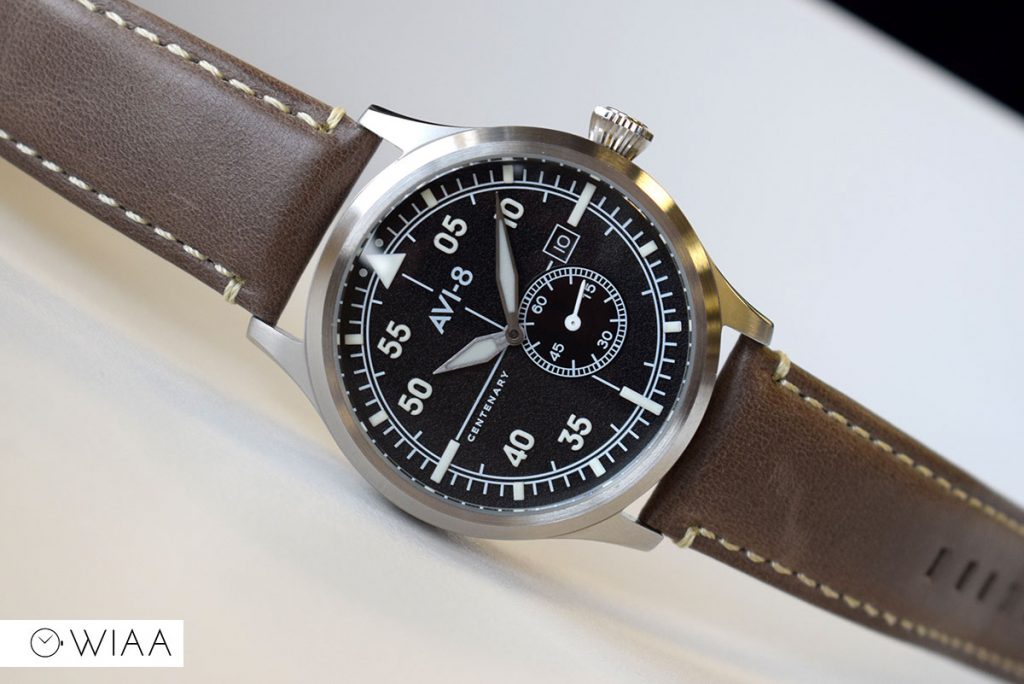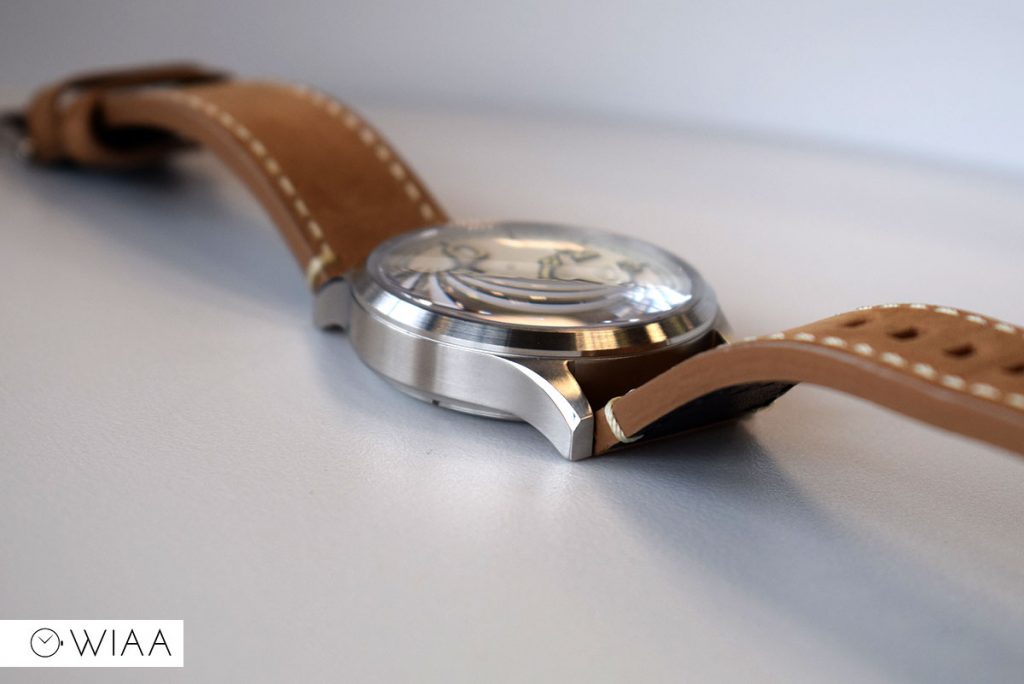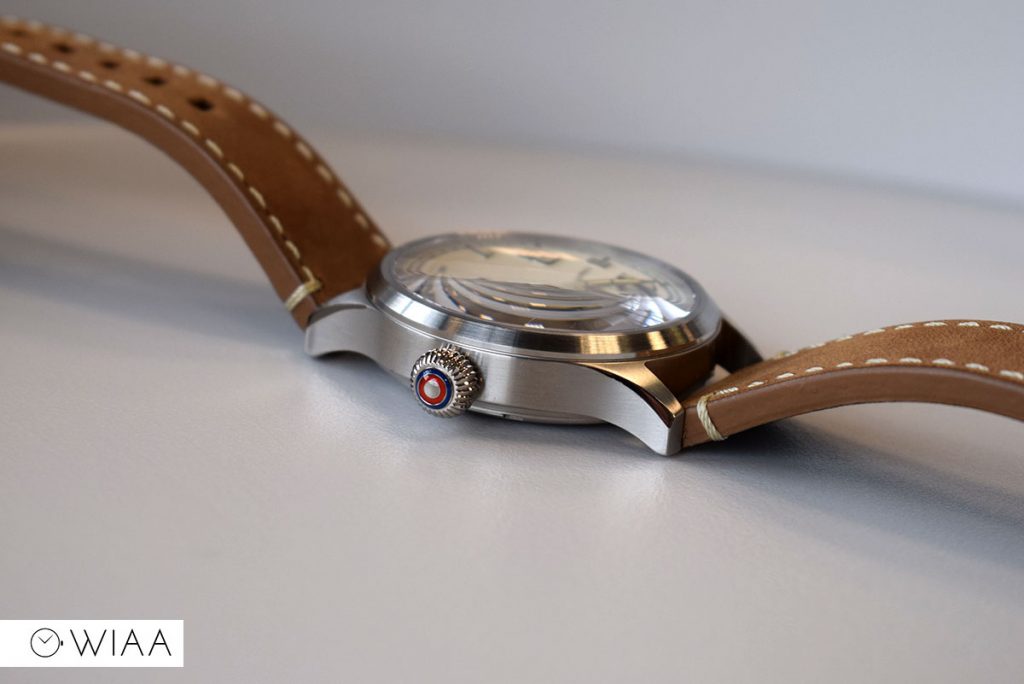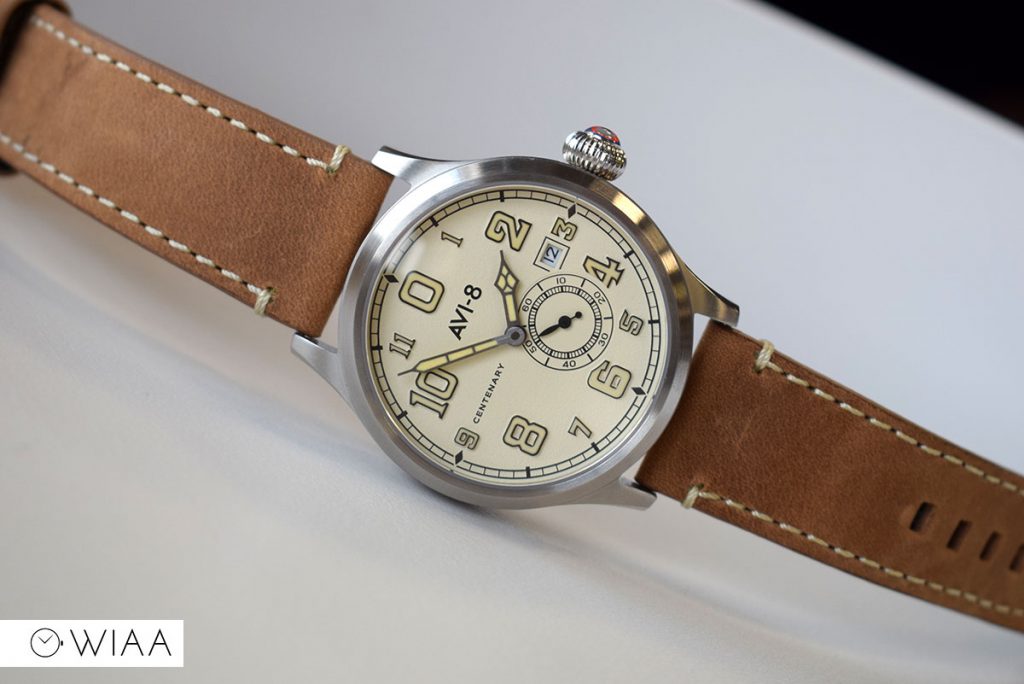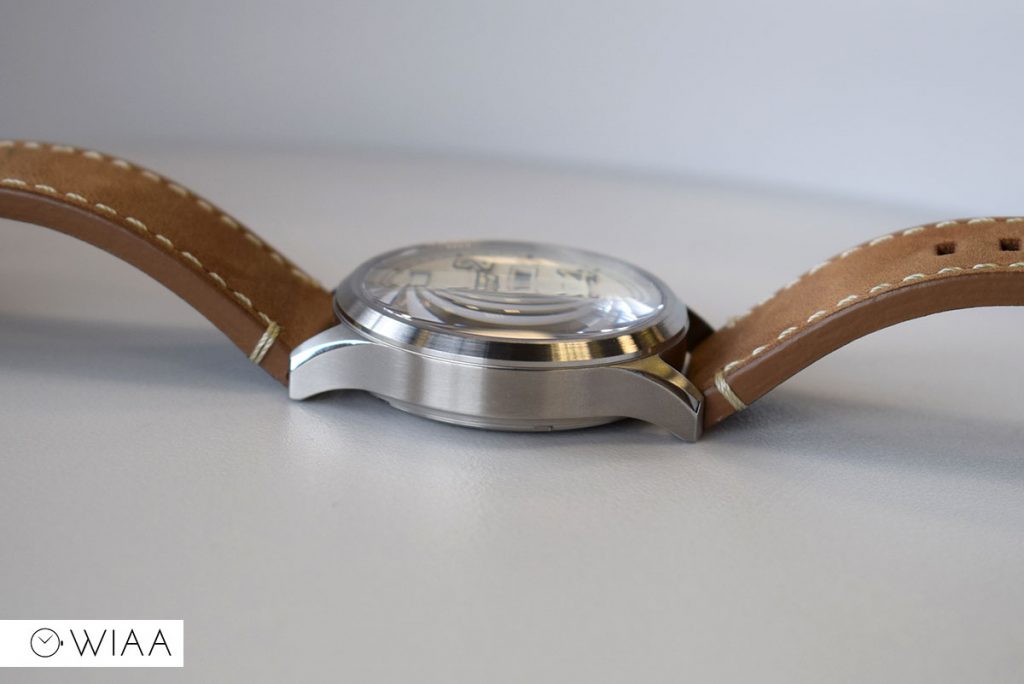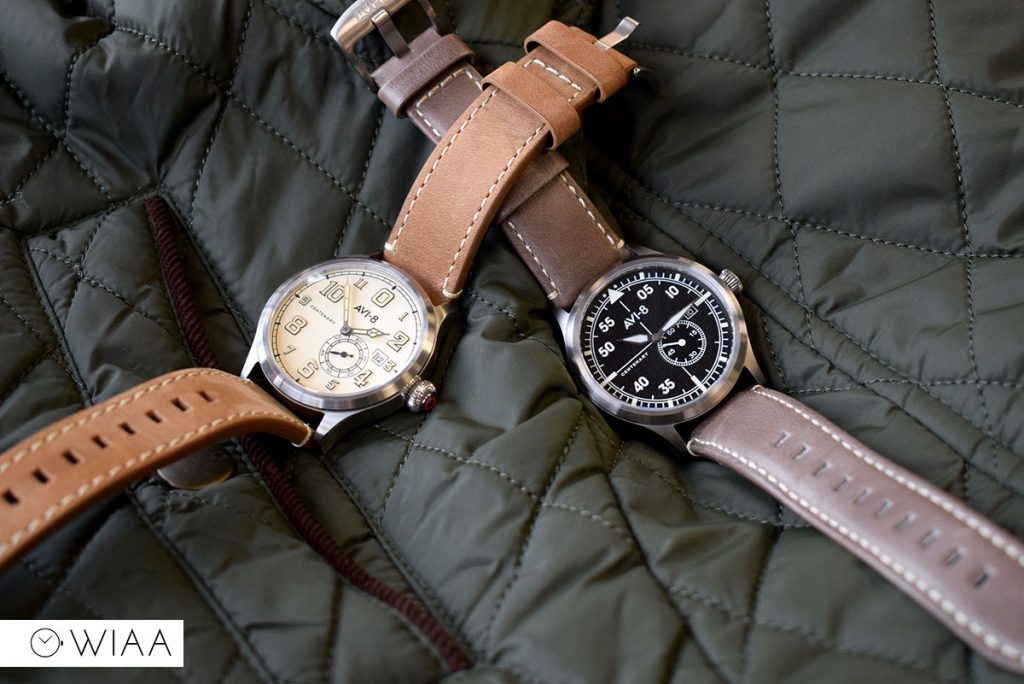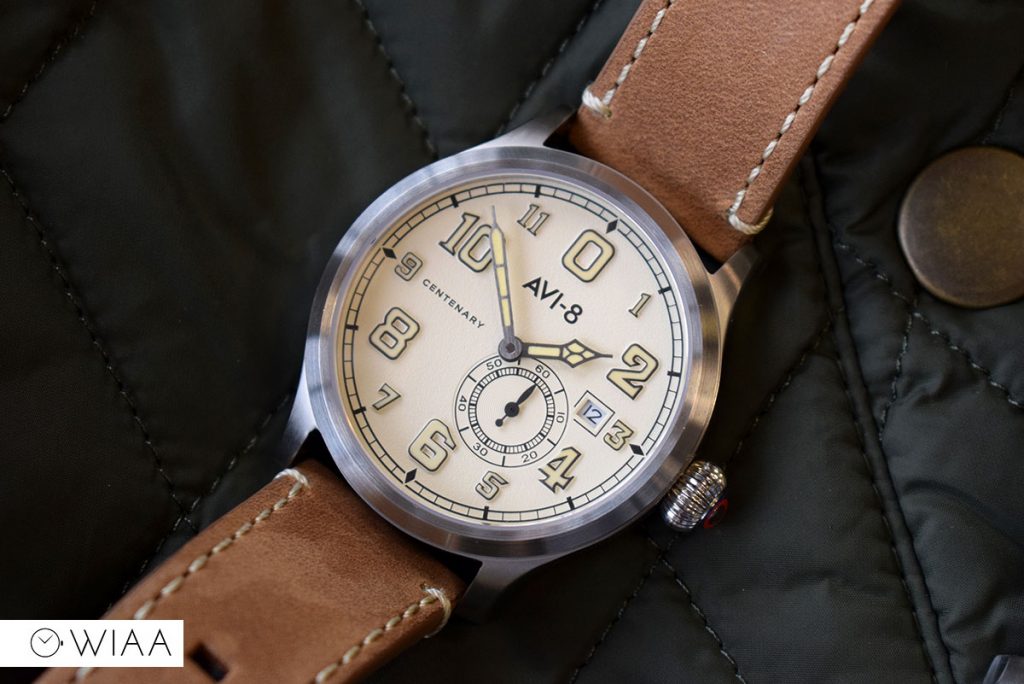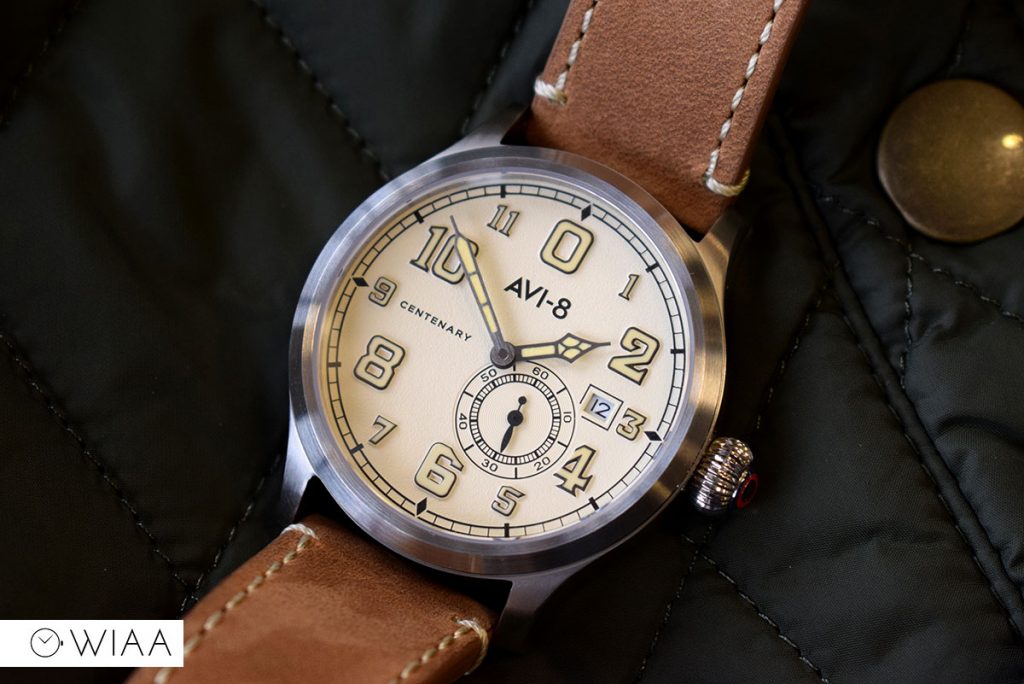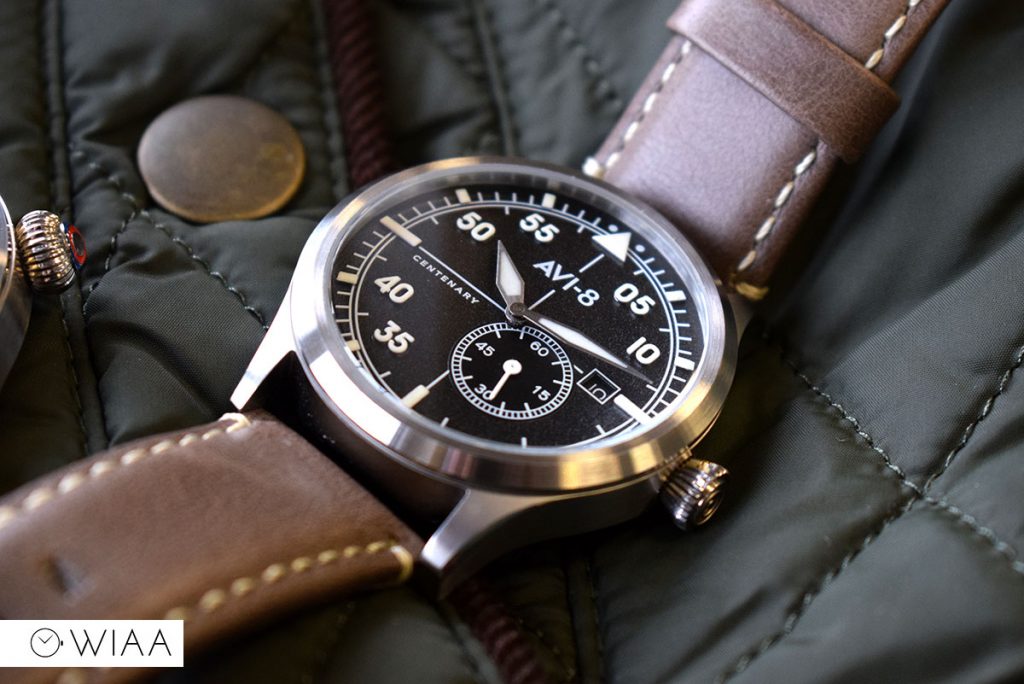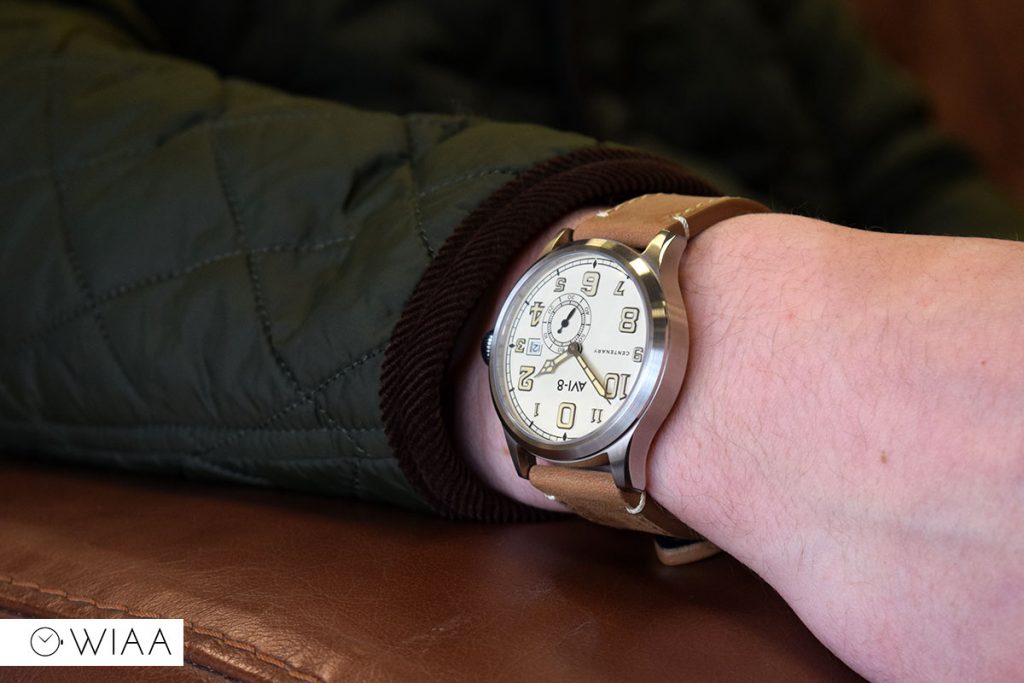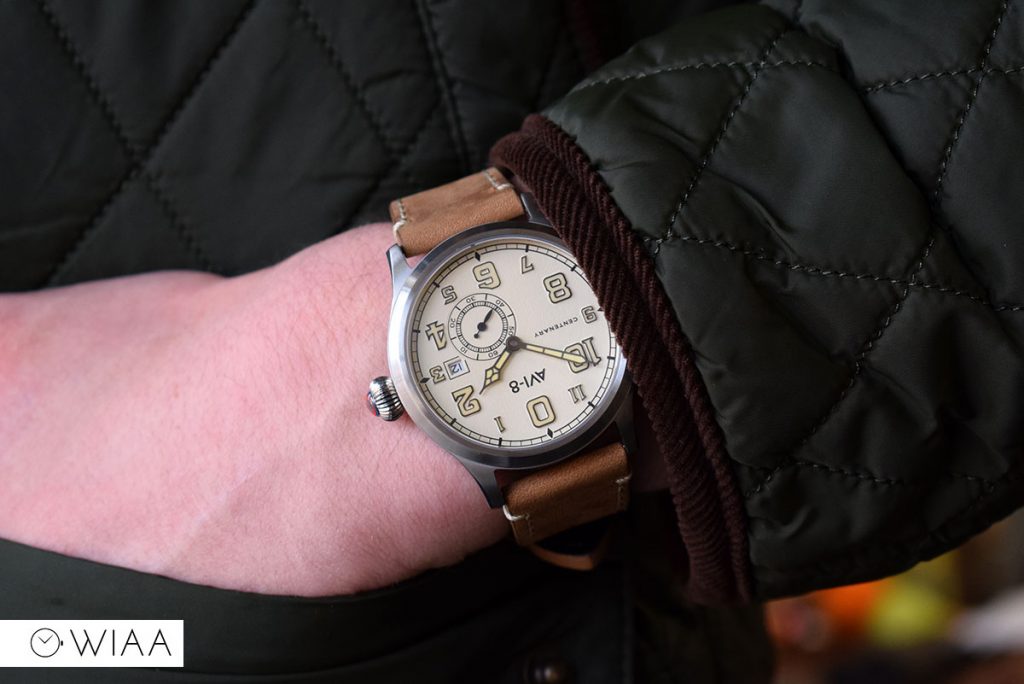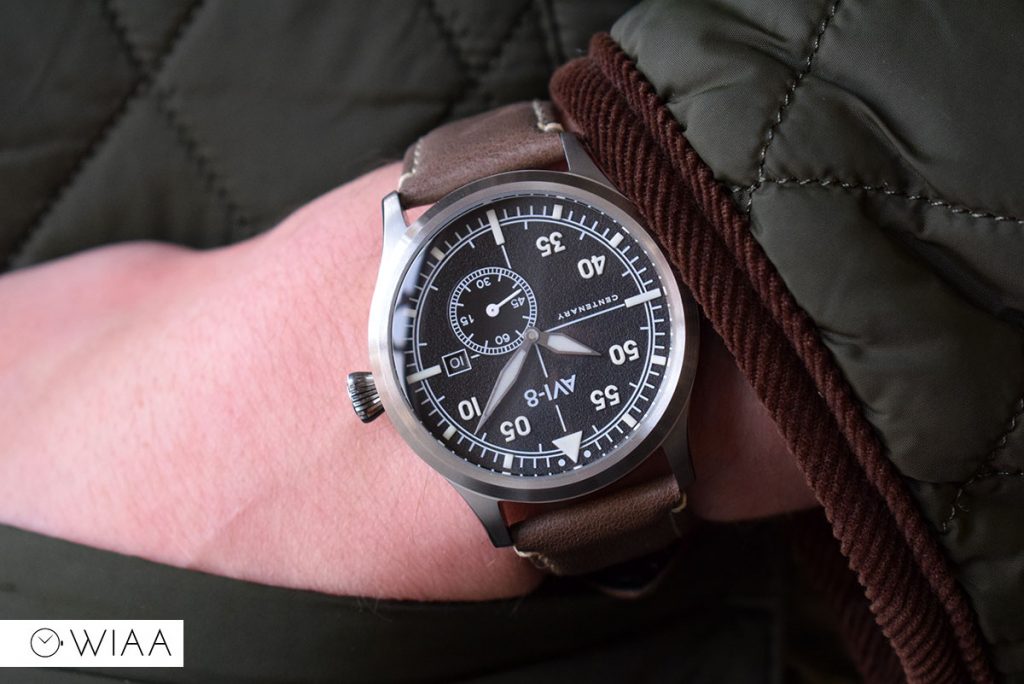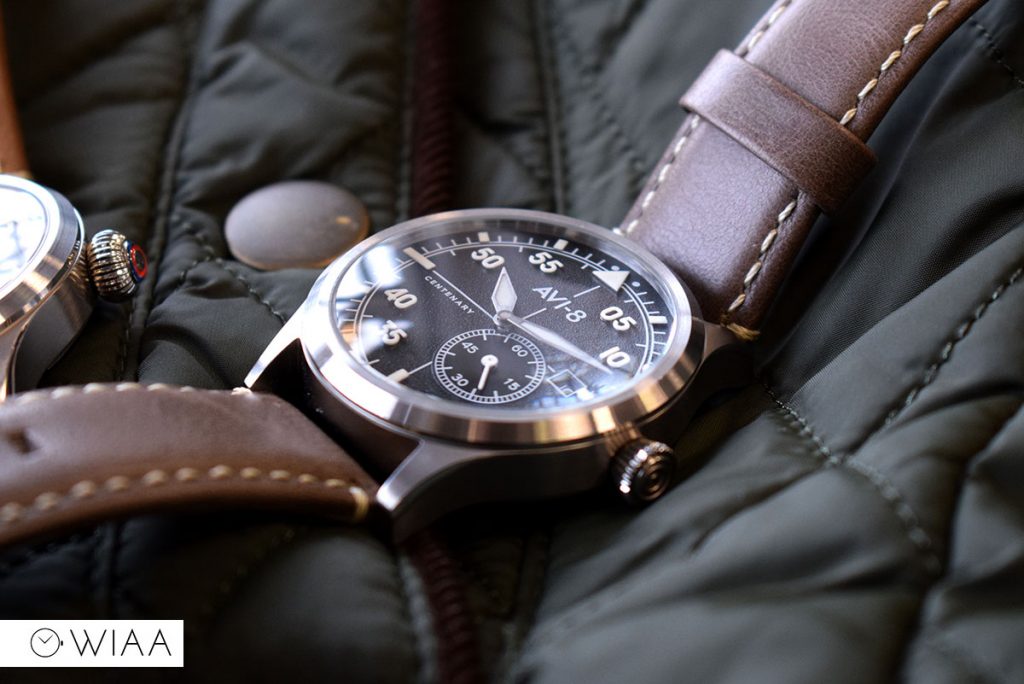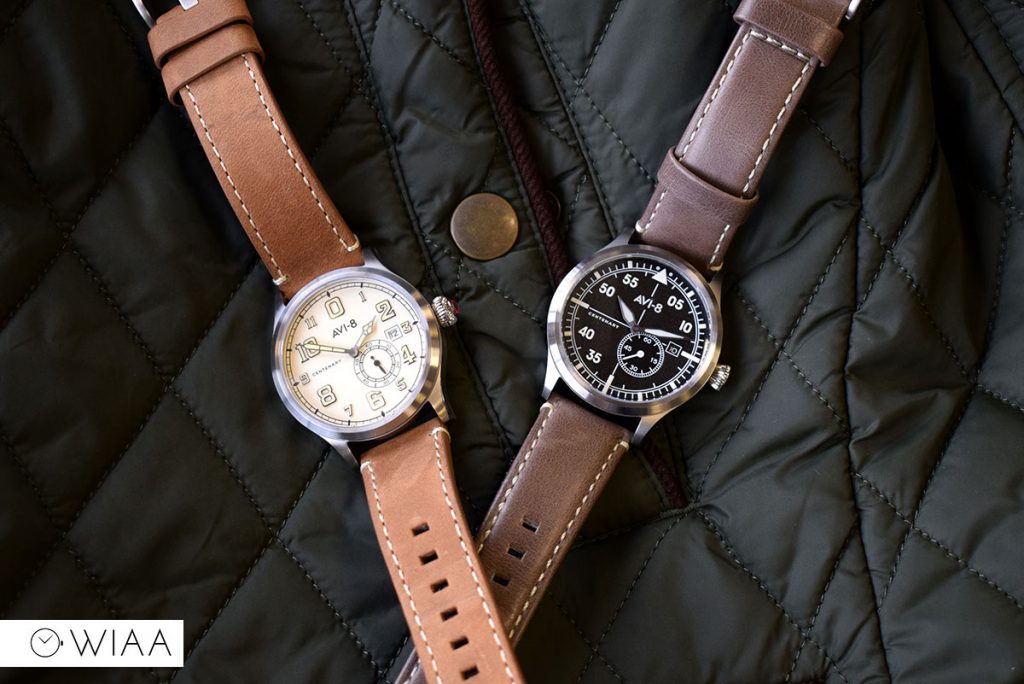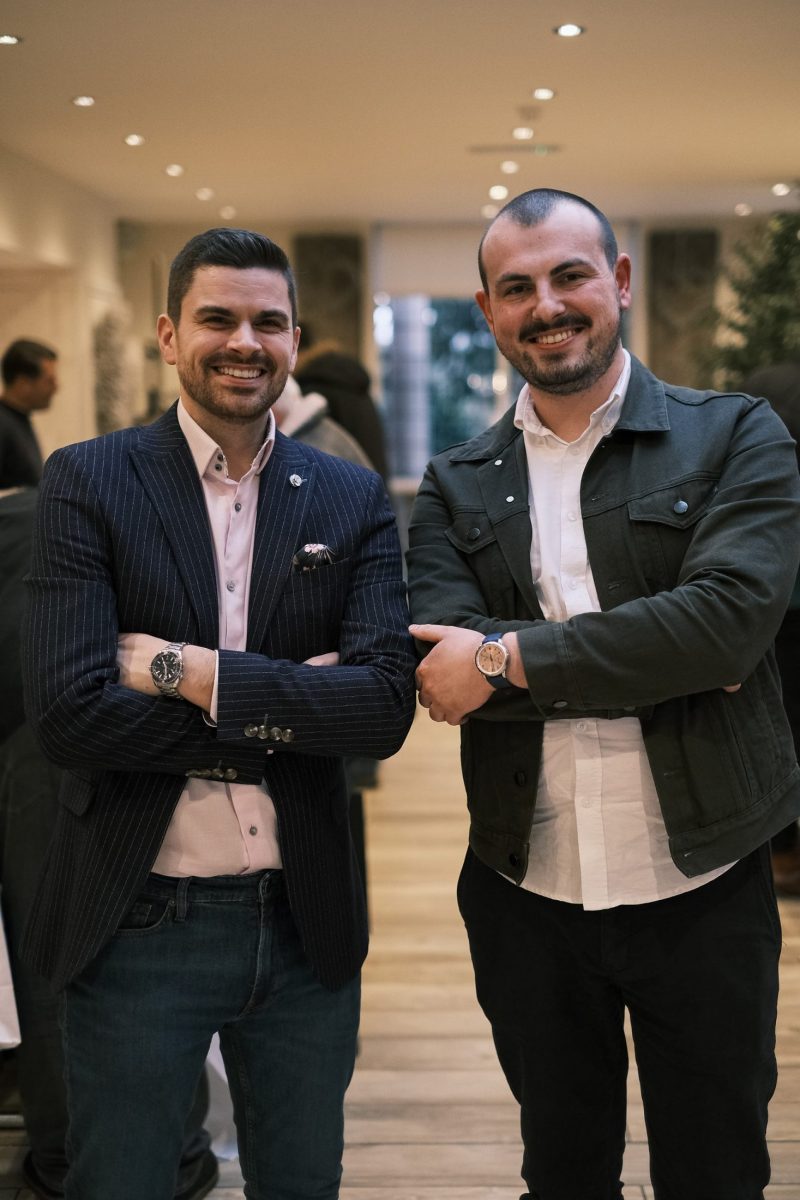Get 20% off everything on the Avi-8 site! Use code WIAB
Avi-8 have just released the Centenary Collection, celebrating 100 years of the RAF (Royal Air Force).
Each of the 4 series, with unique dial and fonts, will be highlighting a particular decade (1920s, 1940s, 1960s & 1980s). They all share the same case and dial configuration, but with slight adjustments to the dial appearance as well as custom crowns. Here we have the first two models – the 1920s & 1940s; the 1960s and 1980s will be released in Q2 2018.
Pre-orders for these two models start on the 7th March 2018, and launch on the 22nd. PS, you can signup here and get a discount: https://avi-8.co.uk/pages/centenary-20s-40s-signup
For quick reference, the 1920s model is the cream dial; the 1940s is the dark dial.
The specs
- Dimensions: 42mm diameter x 12mm height x 48mm lug to lug
- Weight: 1920s: 81g; 1940s: 76g
- Water resistance rating: 5ATM / 50m
- Movement: Miyota 8218
- Accuracy: 1920s: +23.1 sec/day; 1940s: +3.6 sec/day
- Lug width: 22mm
- Warranty: 2 years
- Price: £249
- Buy here (sign up link): https://avi-8.co.uk/pages/centenary-20s-40s-signup
The case
As mentioned previously, all models share the same case; only the crown differs – and the generation that is laser etched on the caseback.
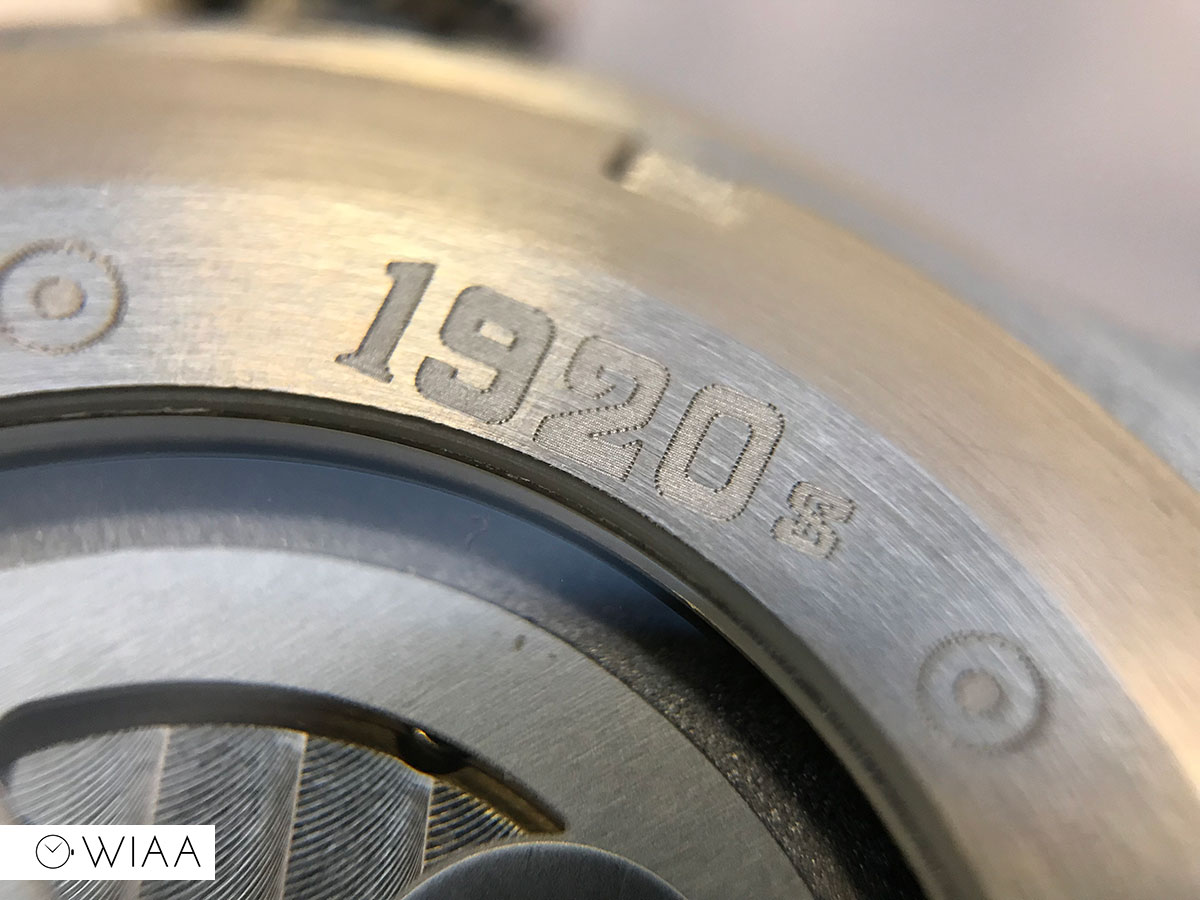
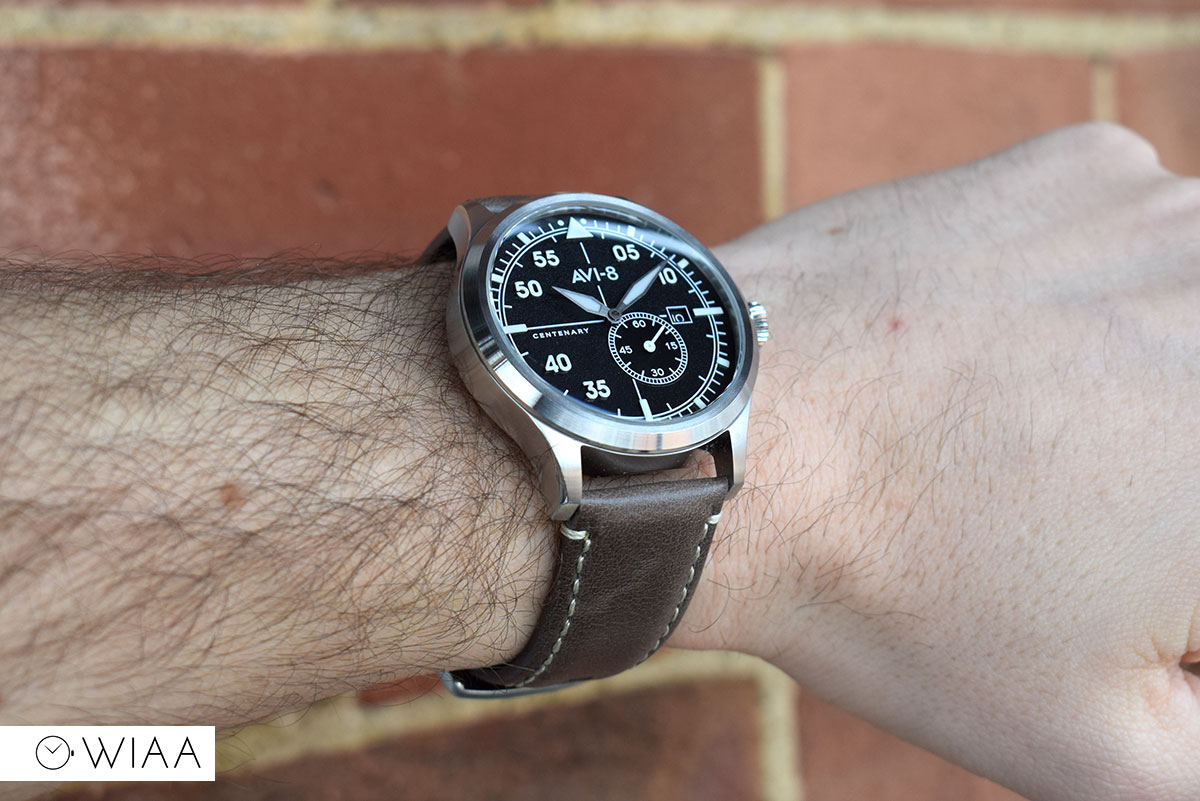
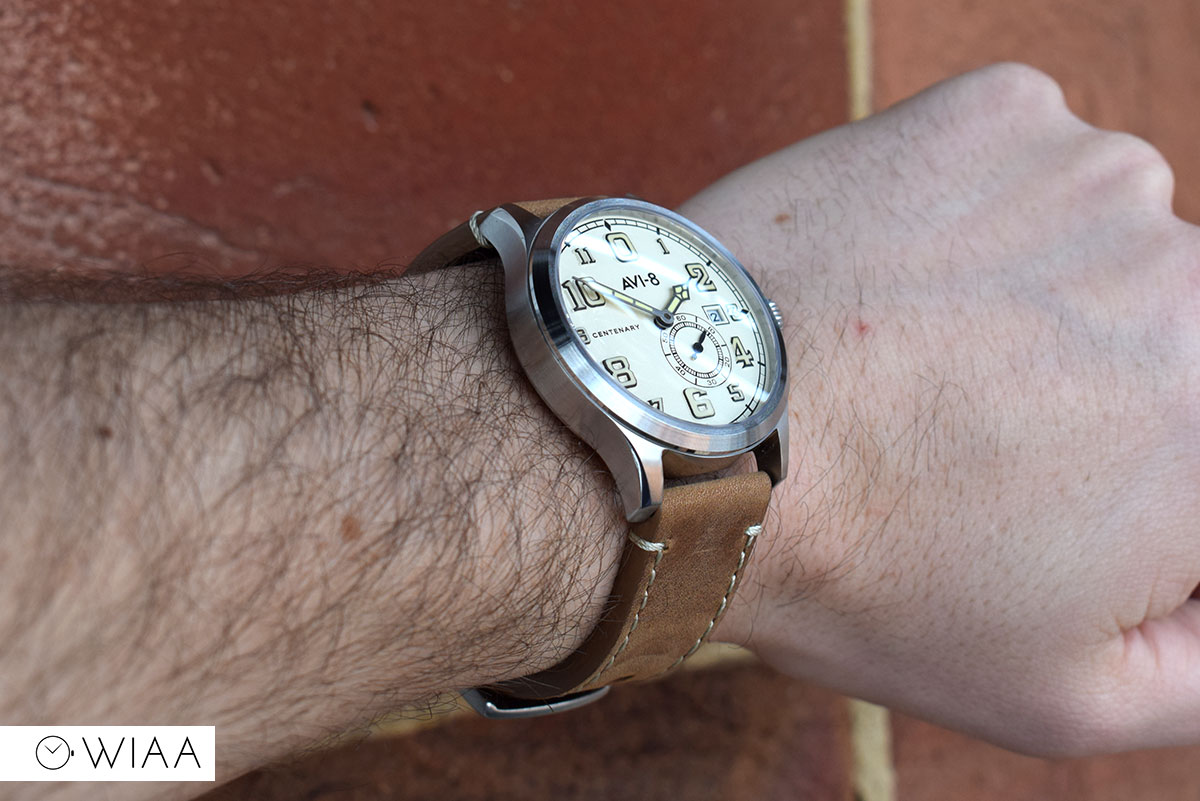
The barrel case is pretty much completely brushed, bar a couple of polished accents: the top shoulders of the lugs and also a ring around the base of the bezel and caseback.
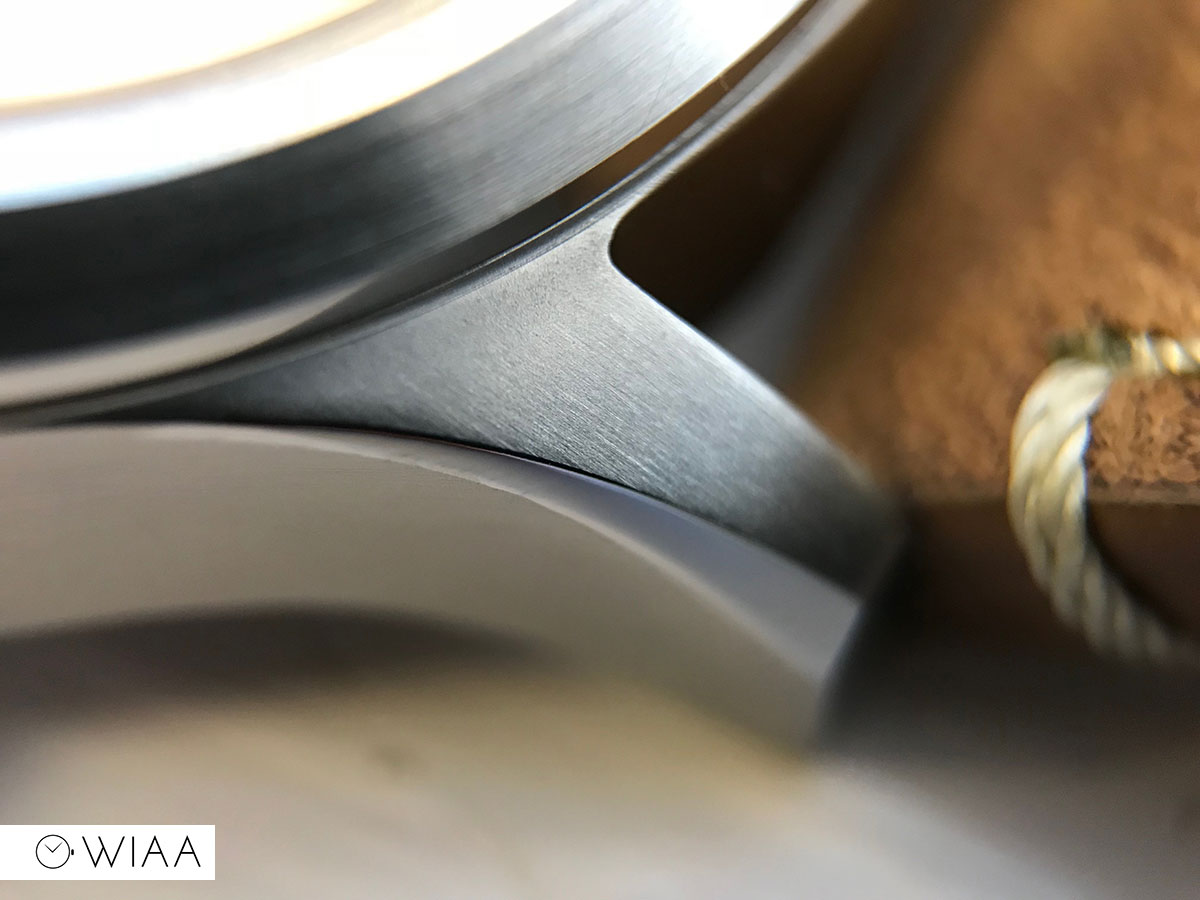
The crown on the 1920’s is my favourite: a full and rounded, bulbous onion with a glass top with the roundel beneath.
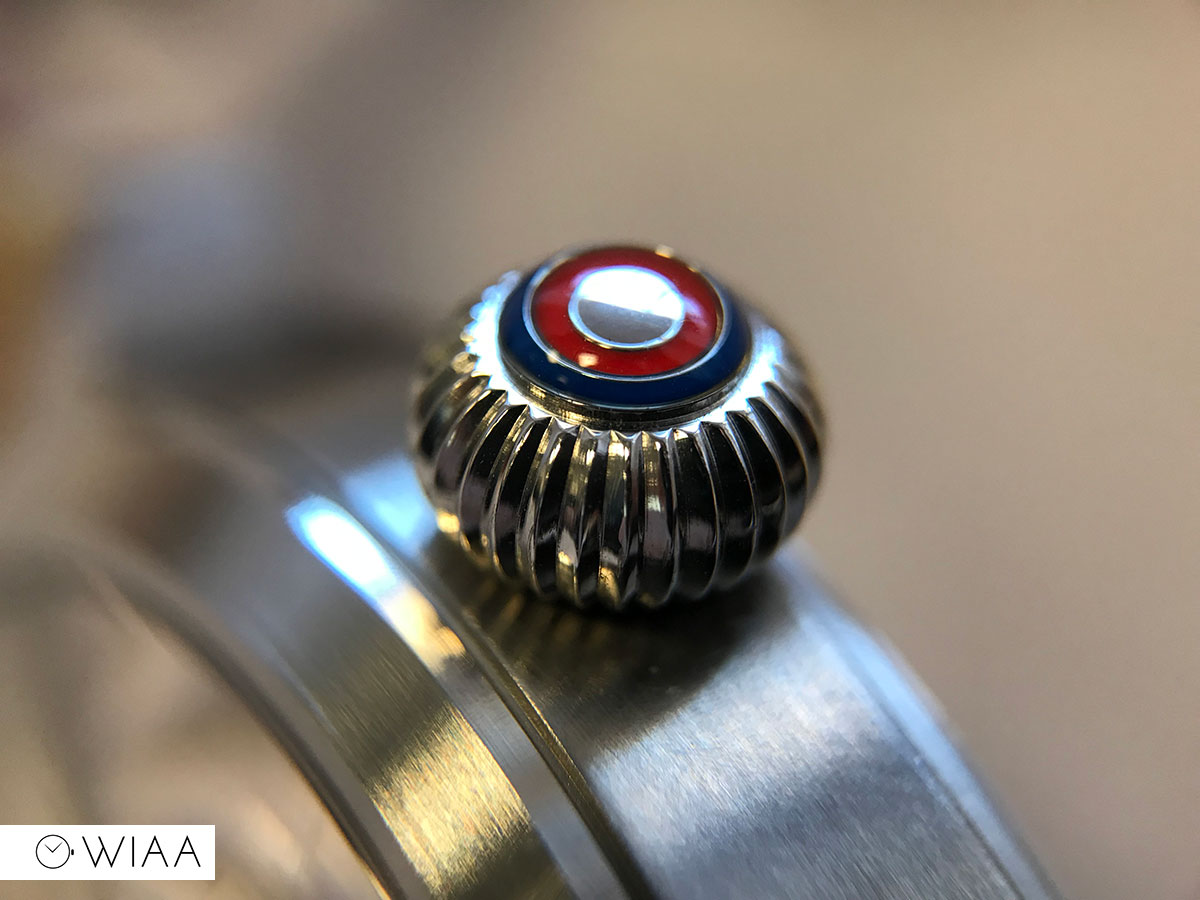
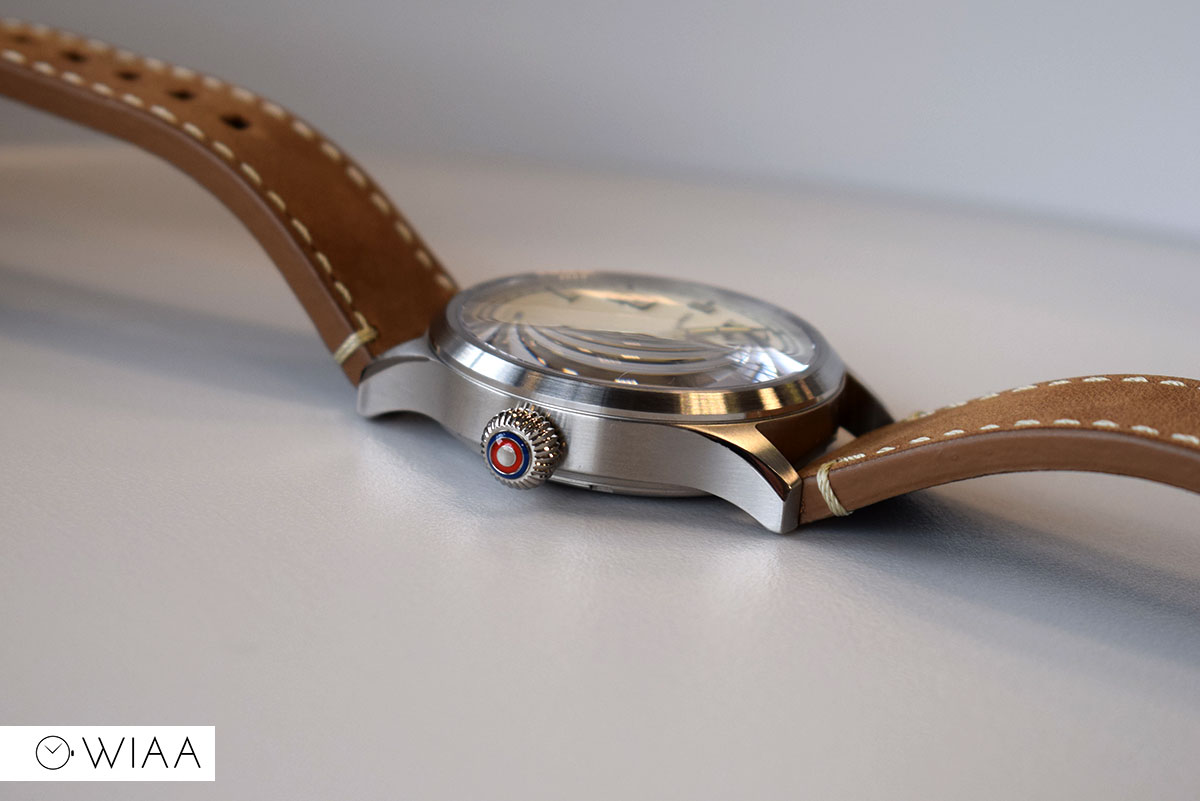
On the 1940’s, the crown is a half-onion, still with a roundel on the end – but with deep engraved rings. As there are no colours, I find it a little bit more plain when comparing the two. Upon closer inspection, the roundel isn’t quite centred either which is a shame.
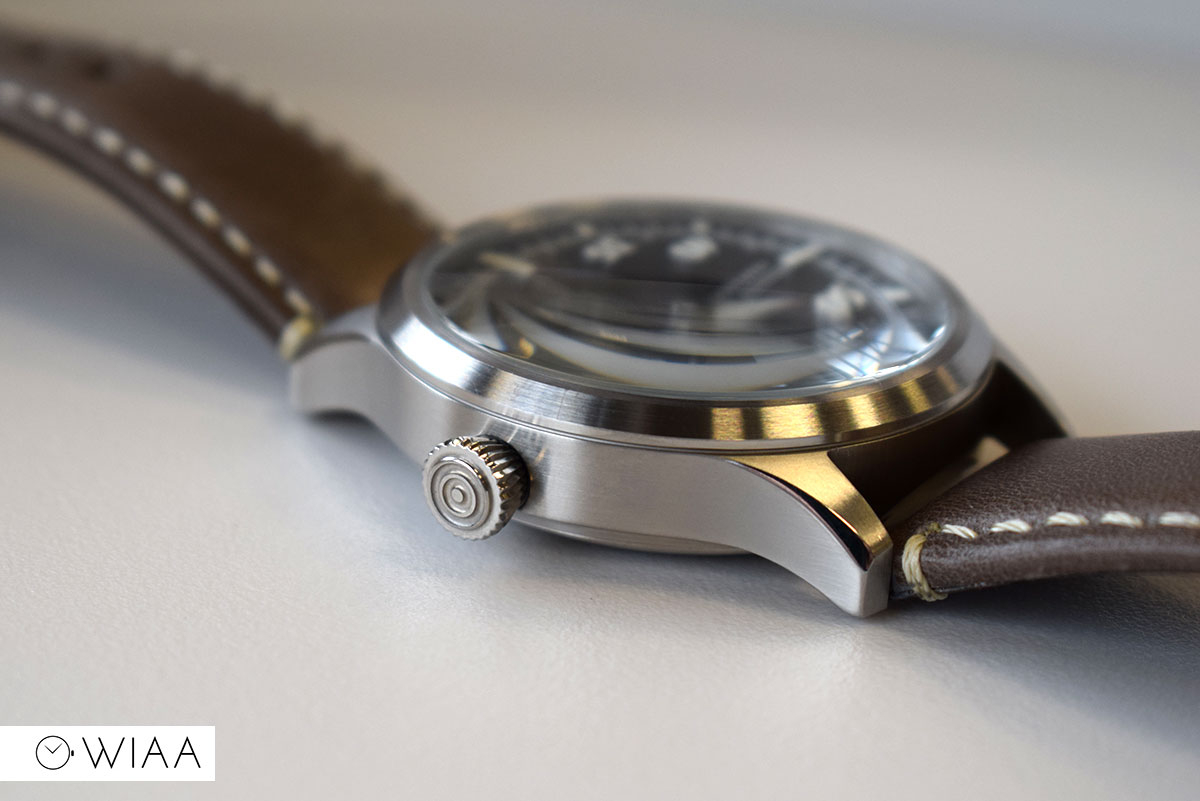
These cases come equipped with a sapphire crystal; Avi-8’s don’t always have them so I’m pleased to see this.
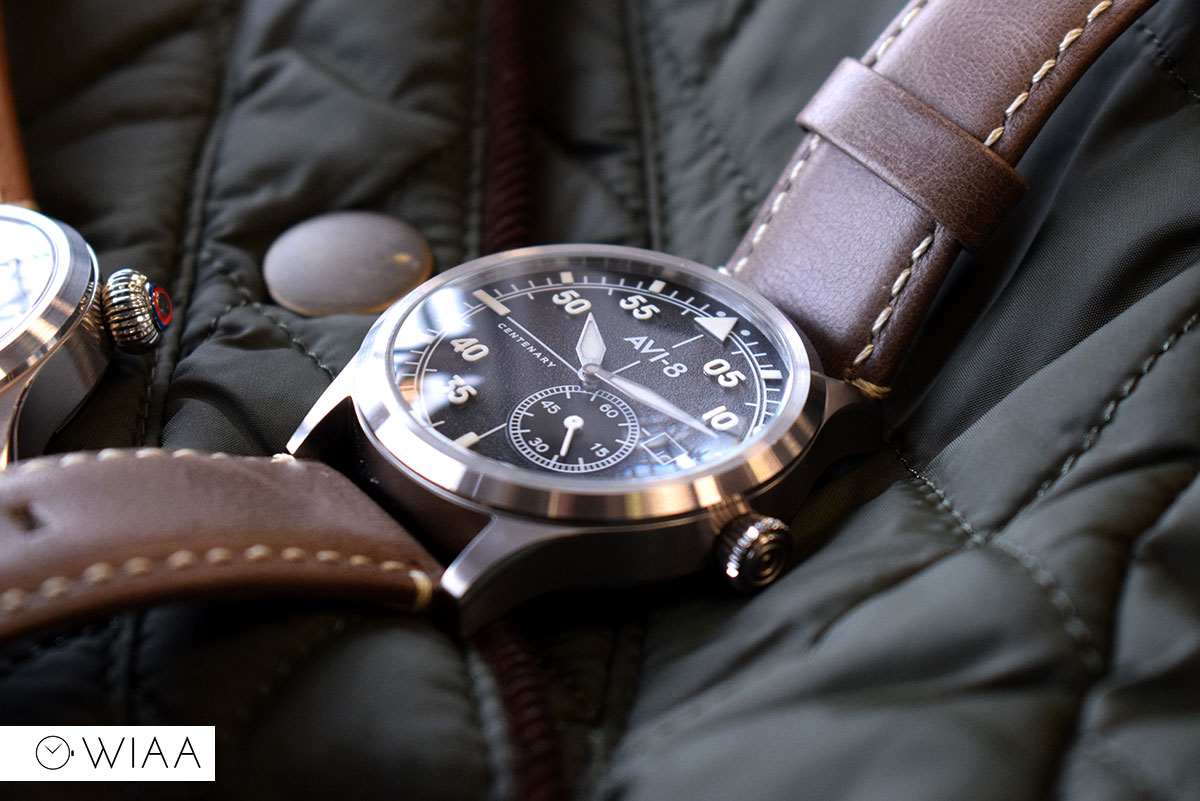
The dial
The same dial layout is used: small seconds at 4, date window at 9. Both dials have a textured base which provides engaging depth.
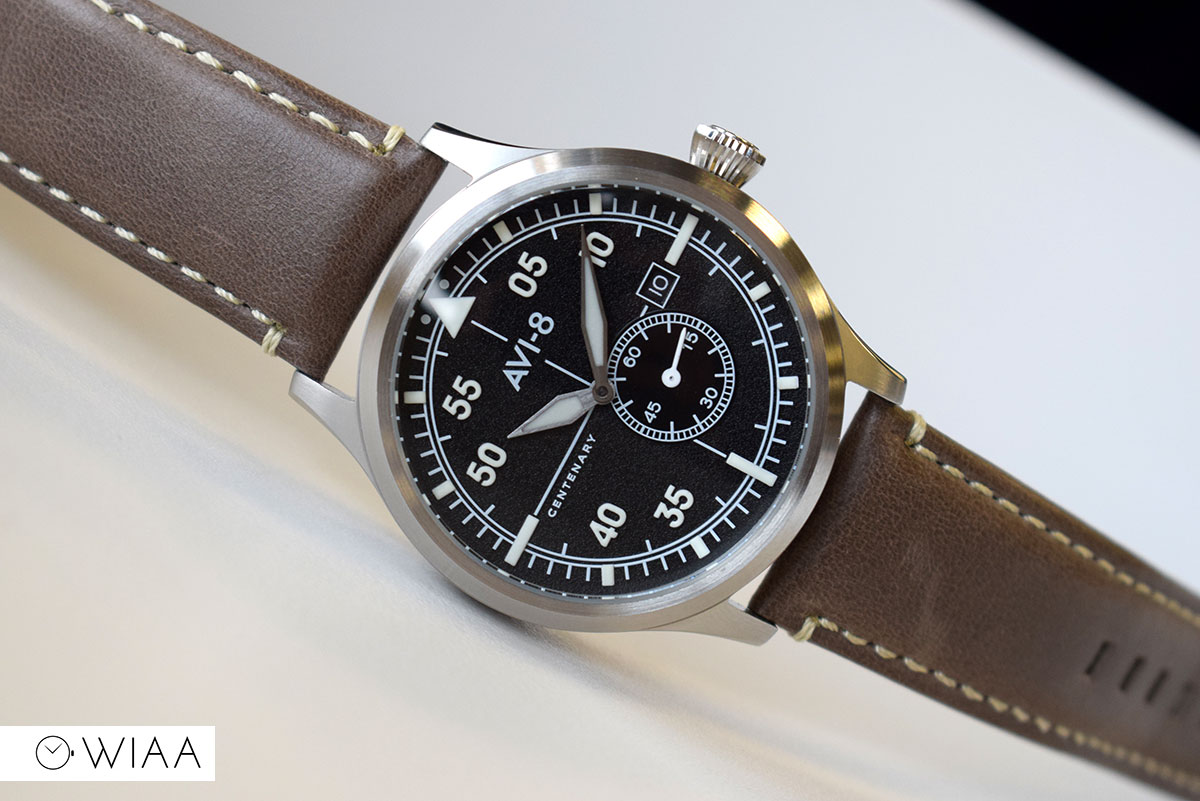
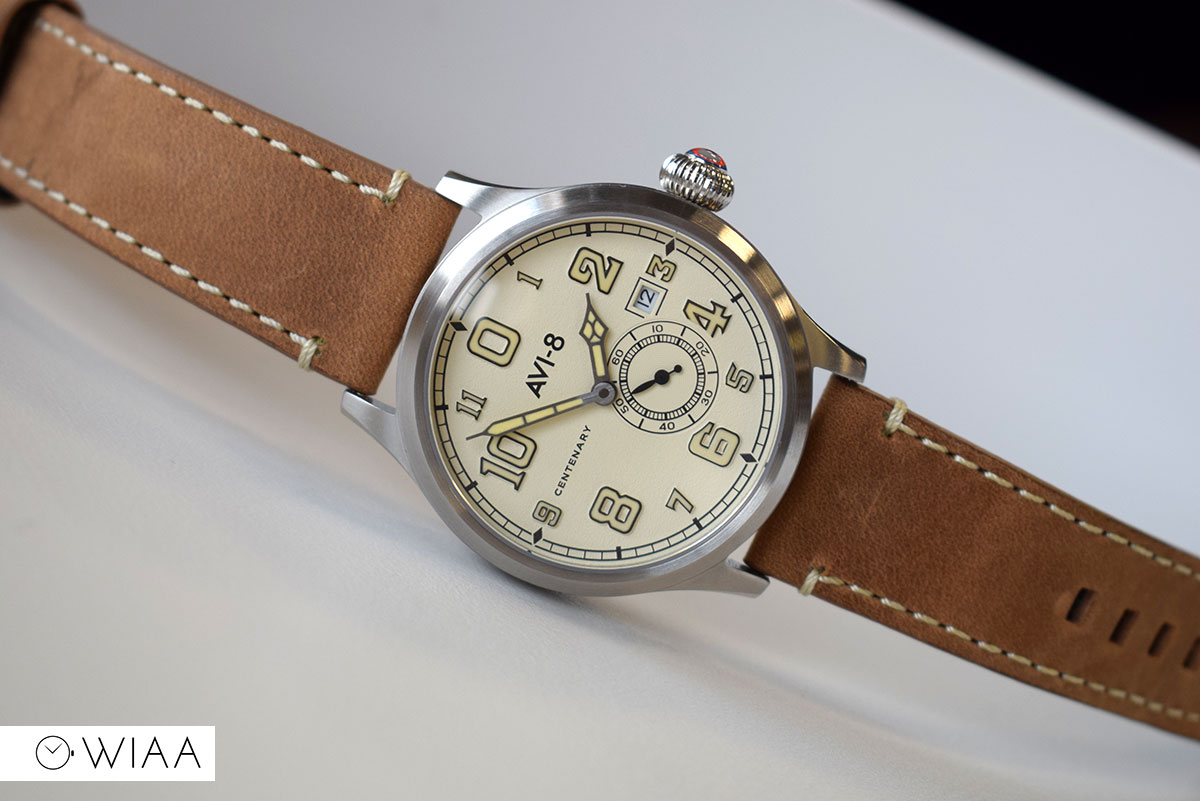
A decent amount of time and effort obviously been put in to this range as there’s a fair amount of customisation between the two – different hands, hour markers, crowns, and date wheels.
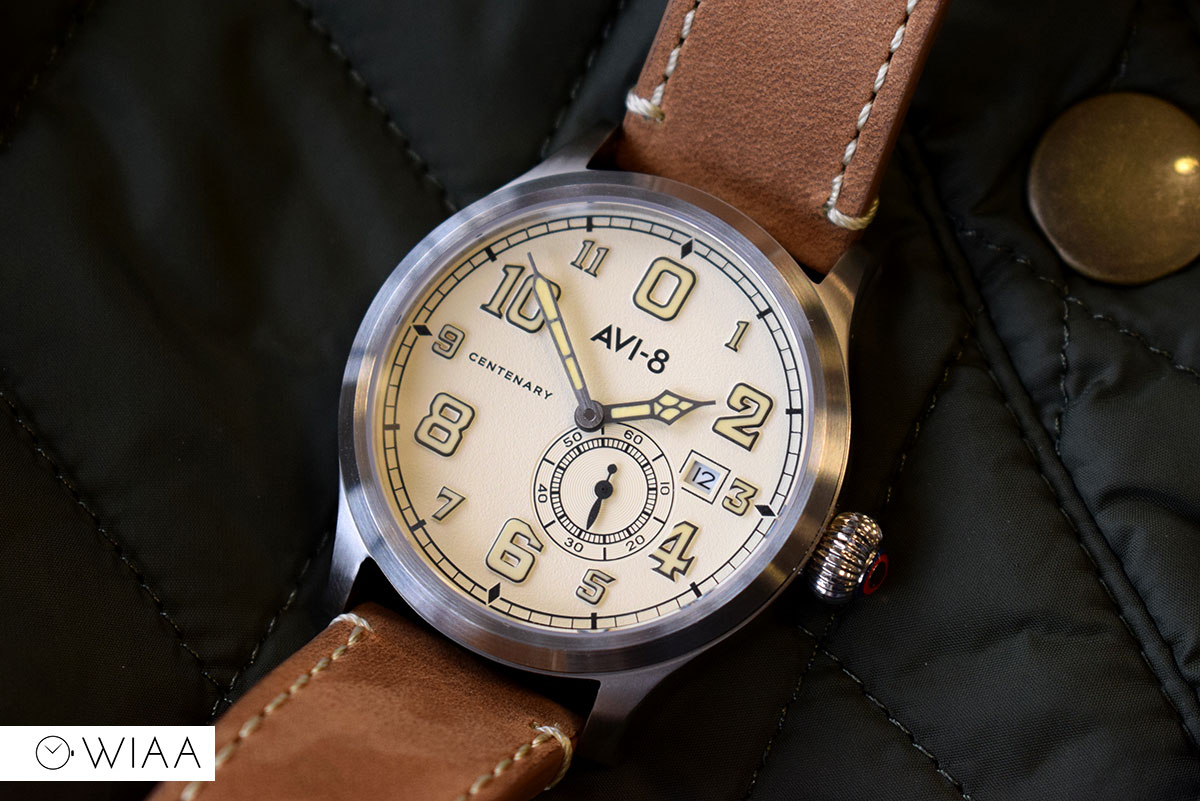
They’ve also generally done a great job in providing a style that mimics the generation each model is based on whilst keeping within the constraints of the dial layout.
I feel the 1920s model expresses this period really well – in particular the cathedral hands and the vintage, art nouveau font used for the hour markers.
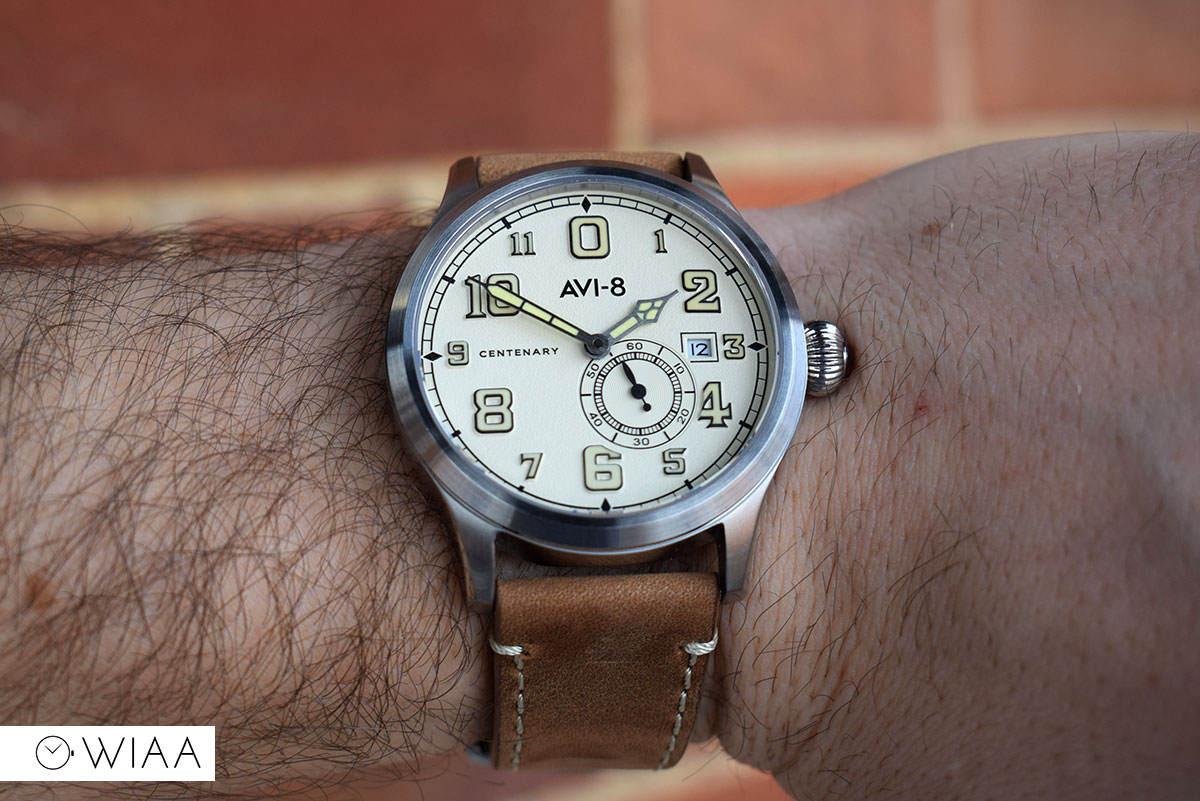
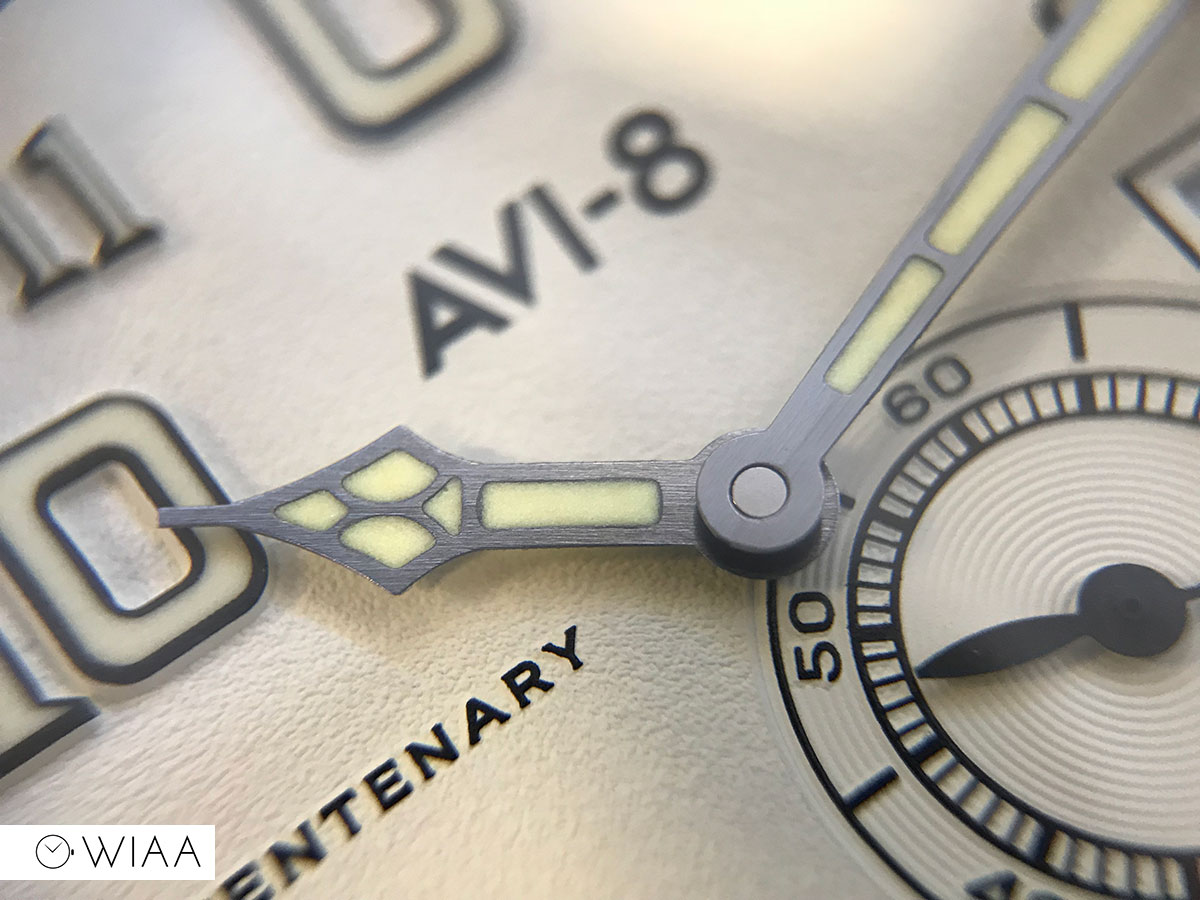
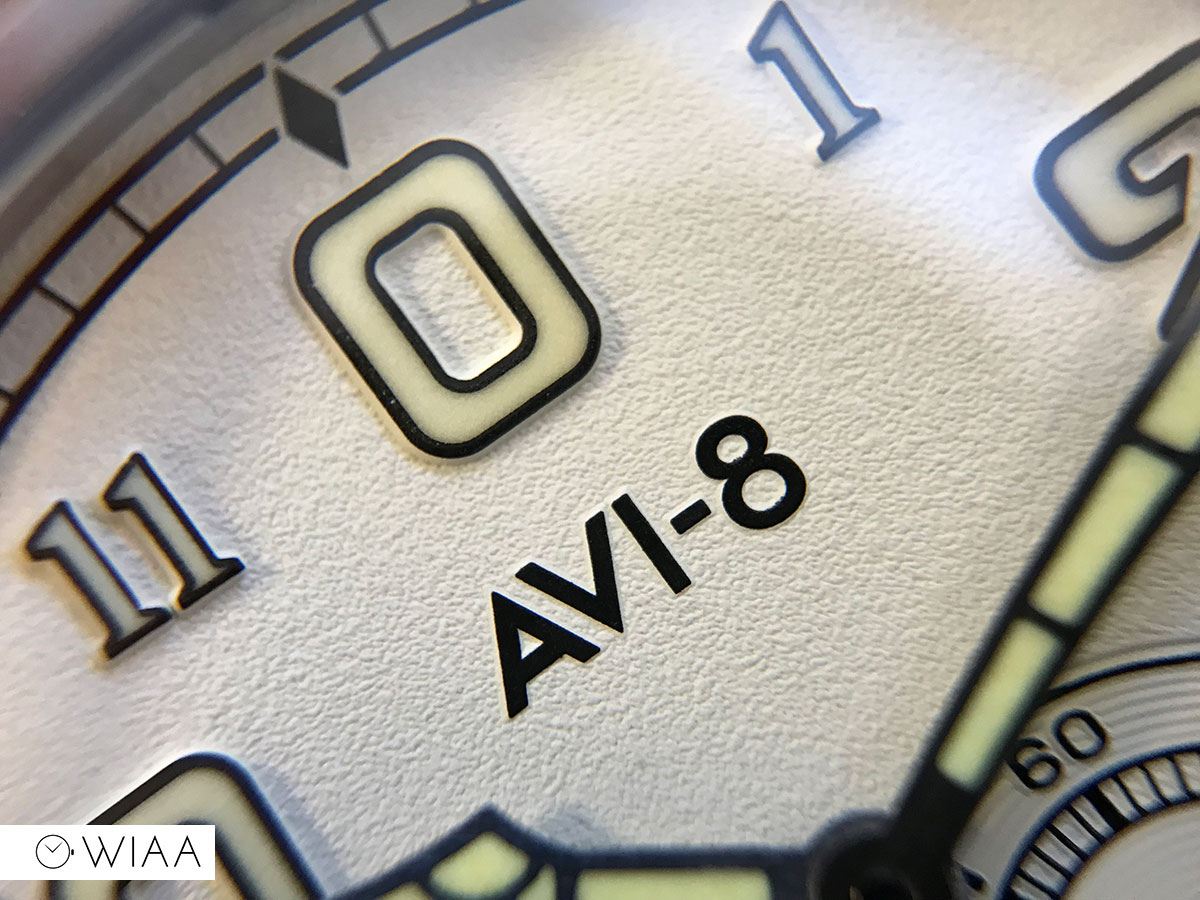
The 1940s is more akin to the type of “Big Pilot” aviation watch that’s still so popular today, with diamond hands and bold numerals with leading 0s. With an inclusion of a crosshair, it certainly feels more like a pilots watch.
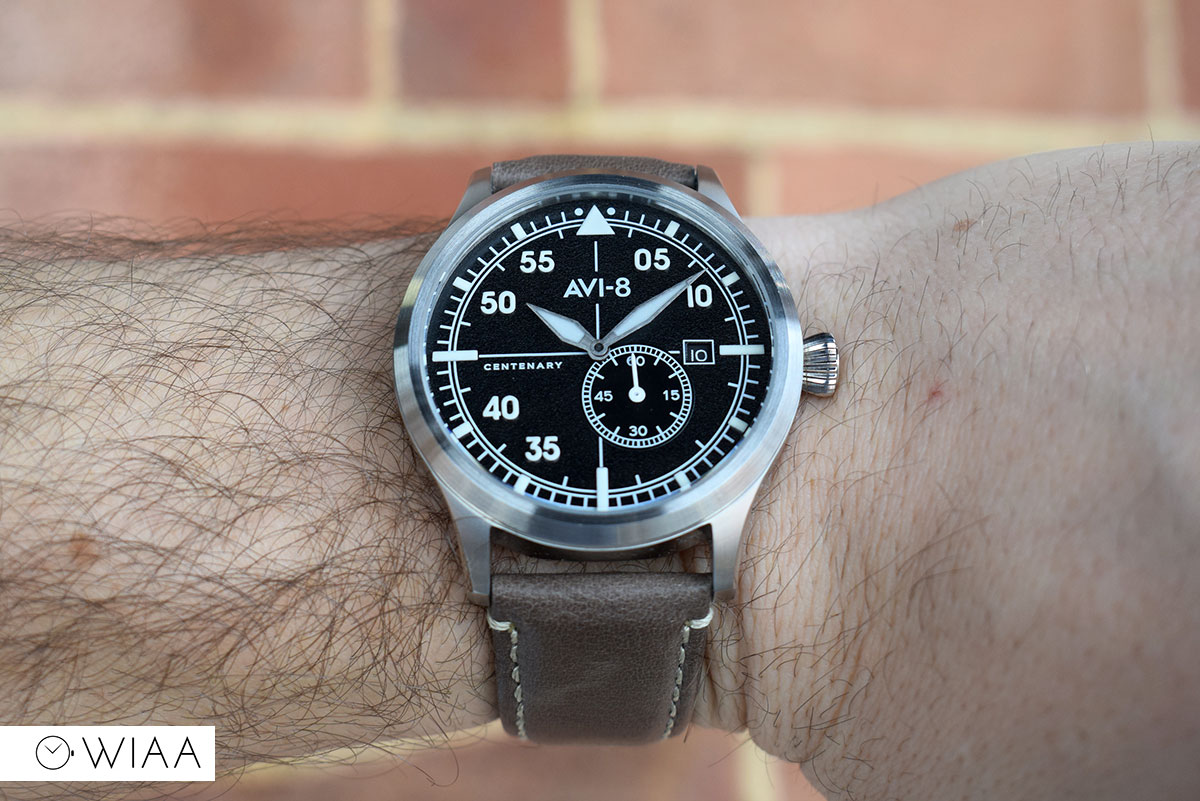
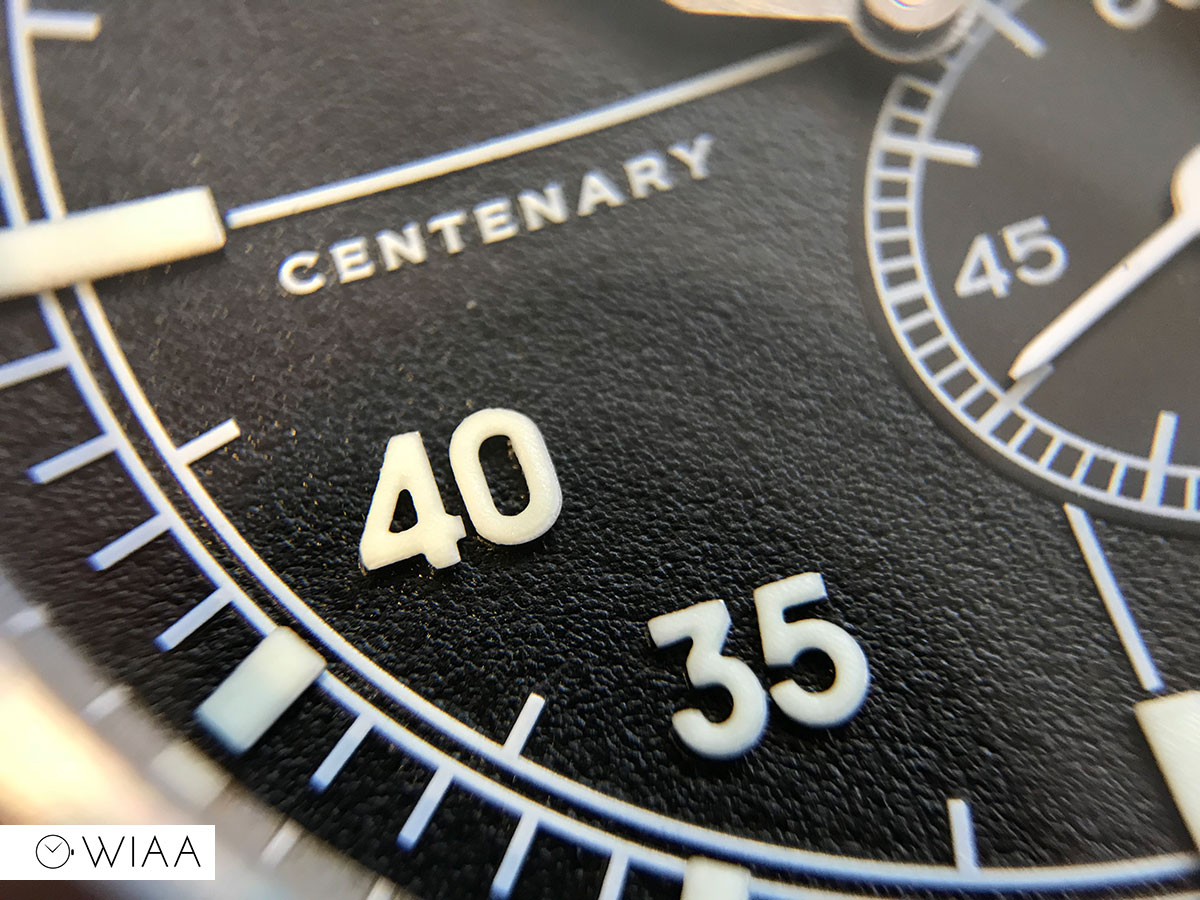
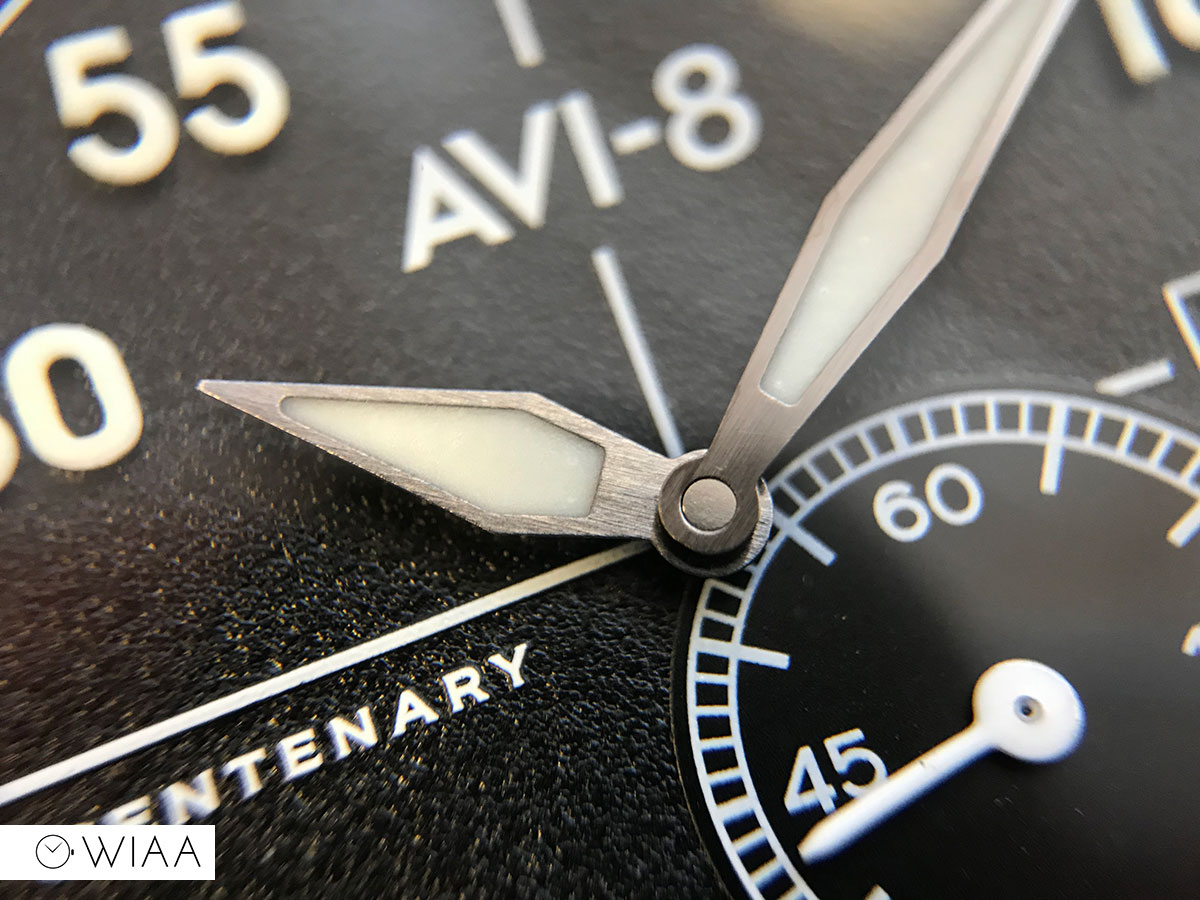
Lume is generally pretty good; I find the 1920s is brighter.
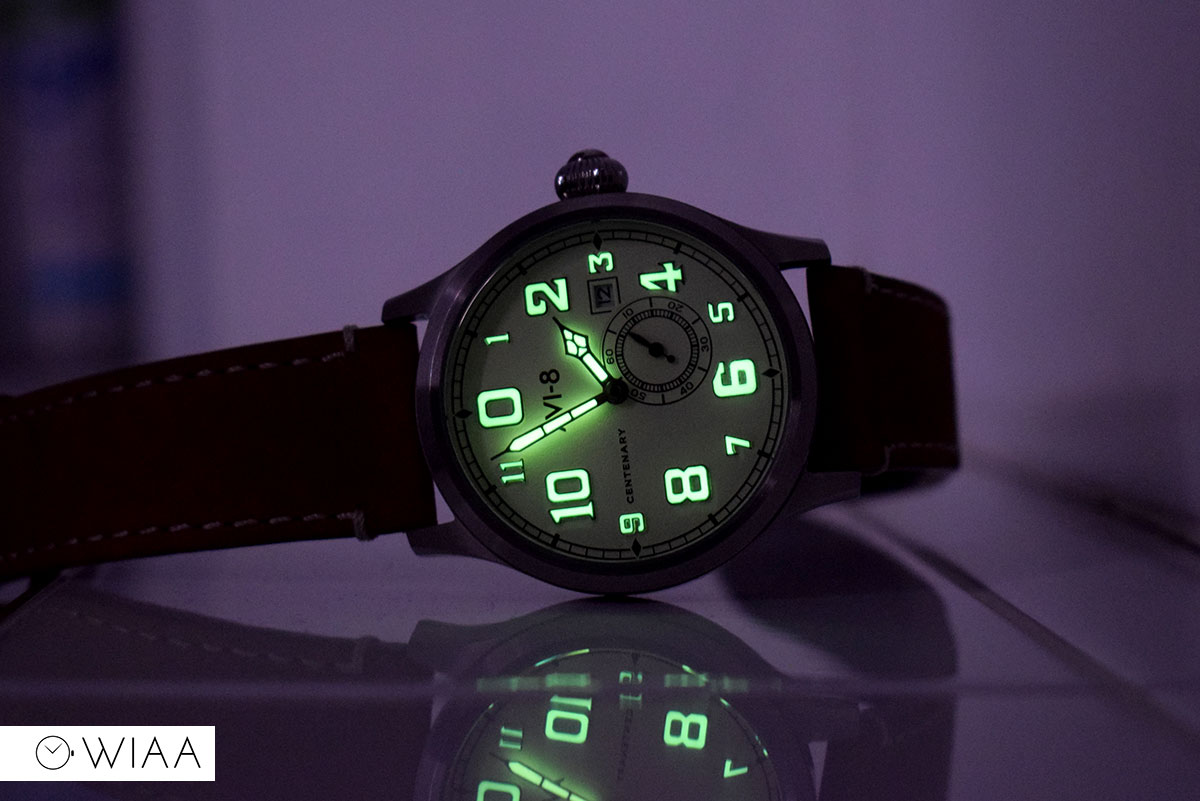
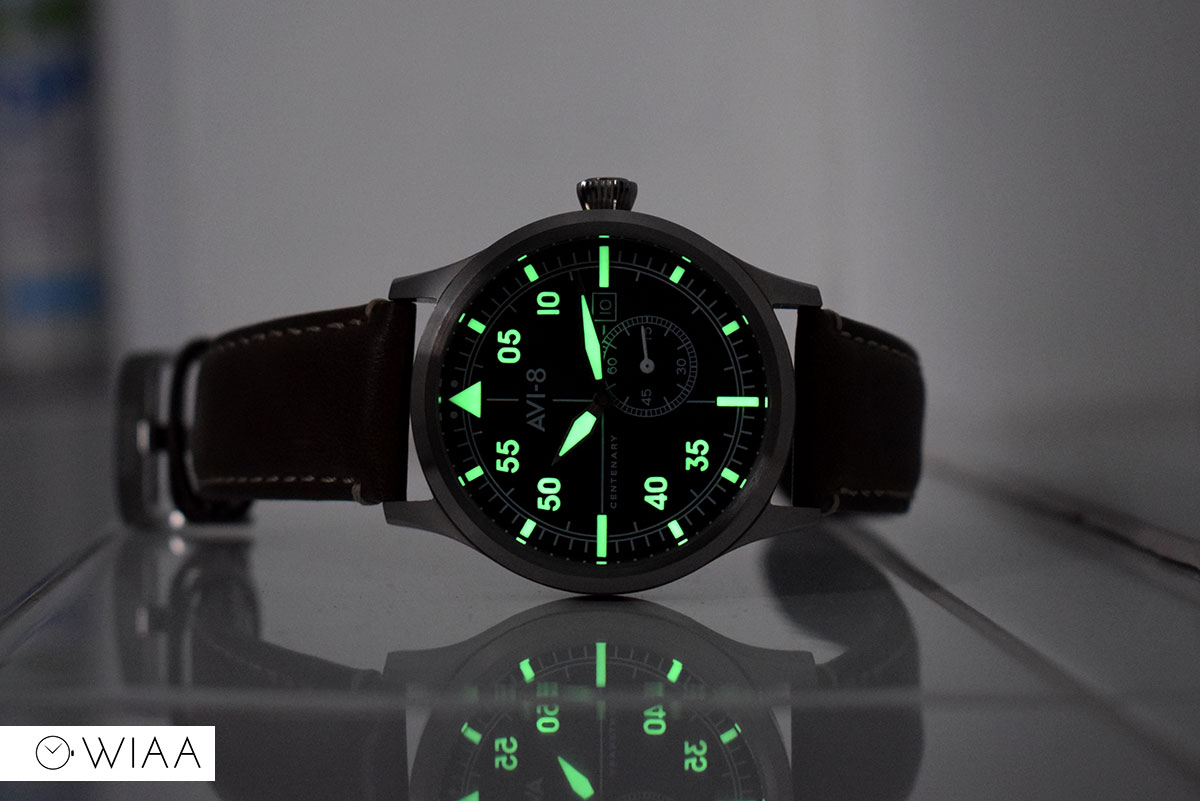
The strap
I find the strap quality is always great from Avi-8. Both are similar in construction and design: a shade of brown to complement the dial with white stitching. The 1920s leather has a matte texture to it, whilst the 1940s has a smoother, slightly patent finish.
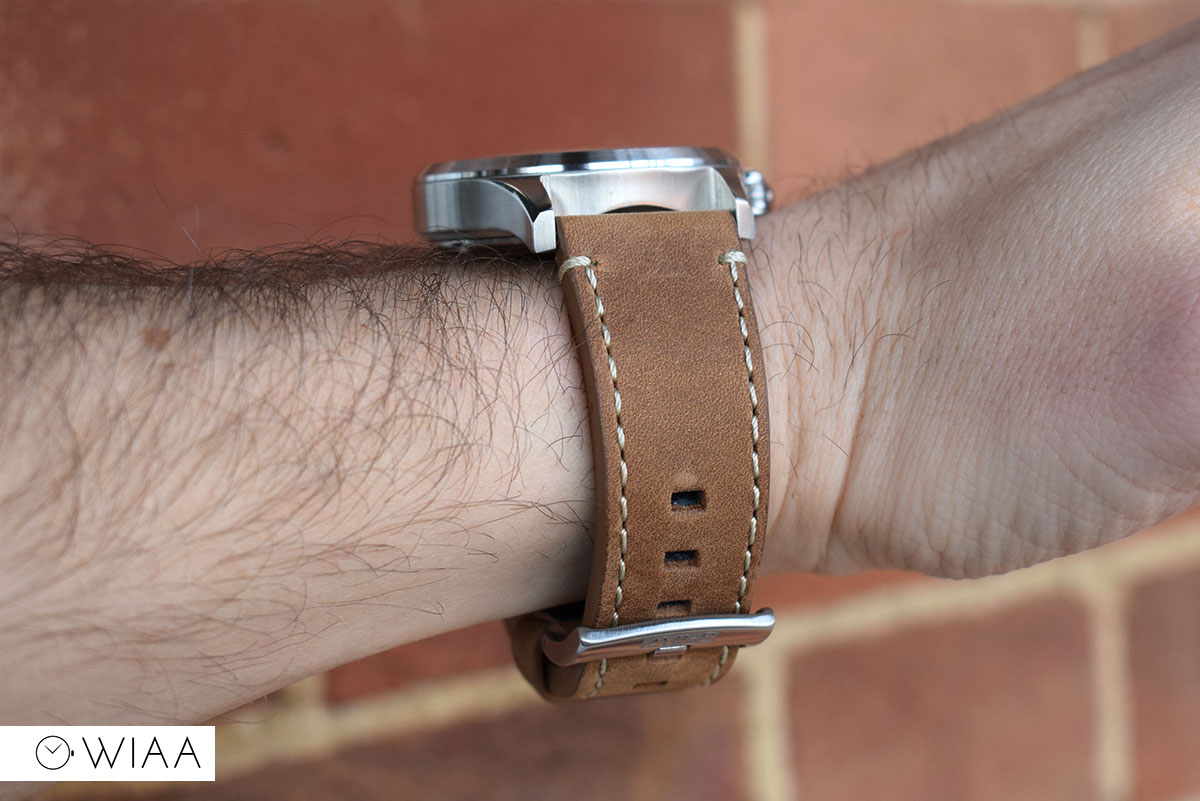
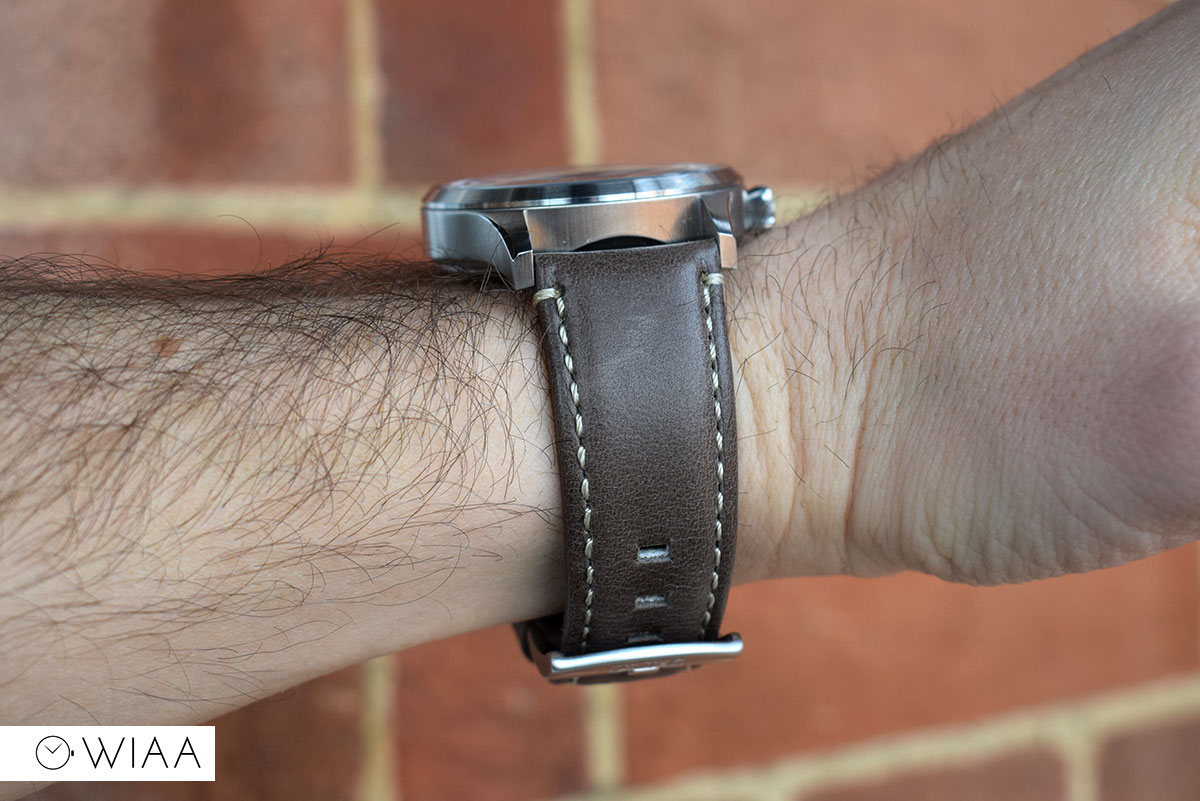
The 1920s is a lighter tan brown, to accompany the cream dial. The colour of the 1940s also works well with the darker dial; being a darker, oaky hue.
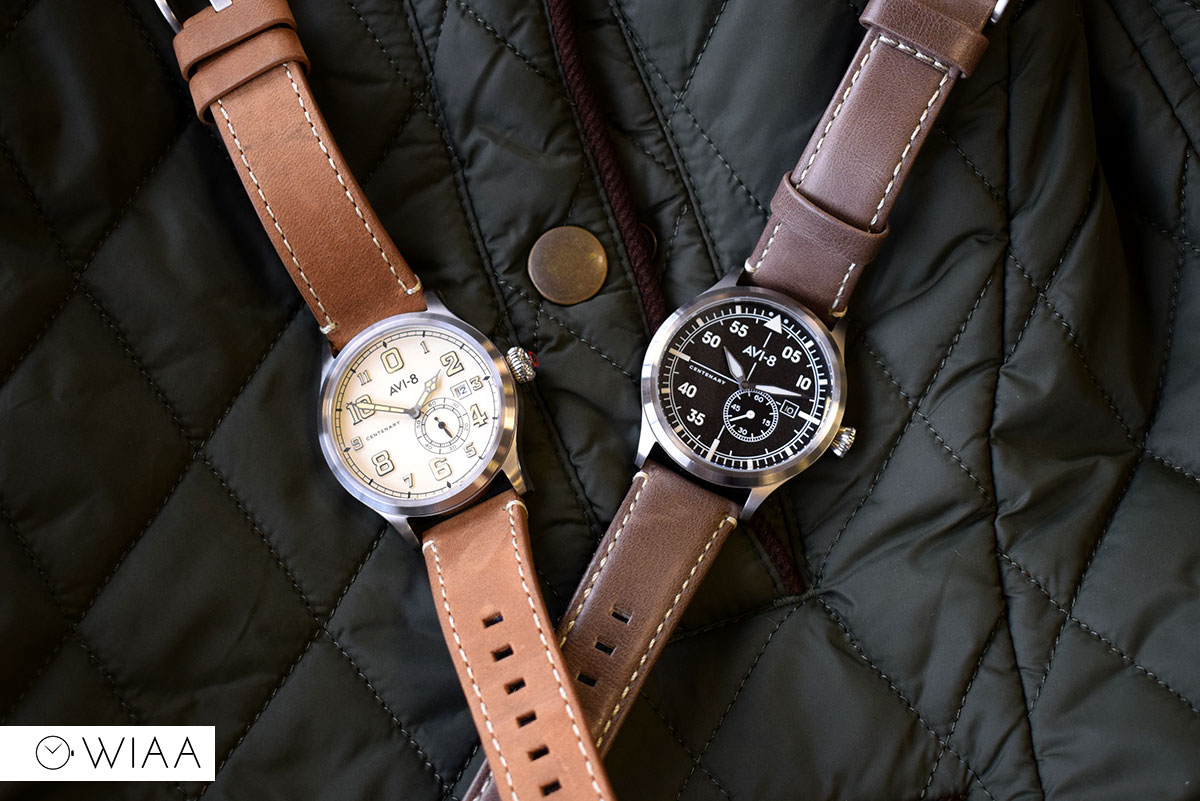
The tang buckle is completely brushed and features the Avi-8 logo engraved in the centre of the top bar.
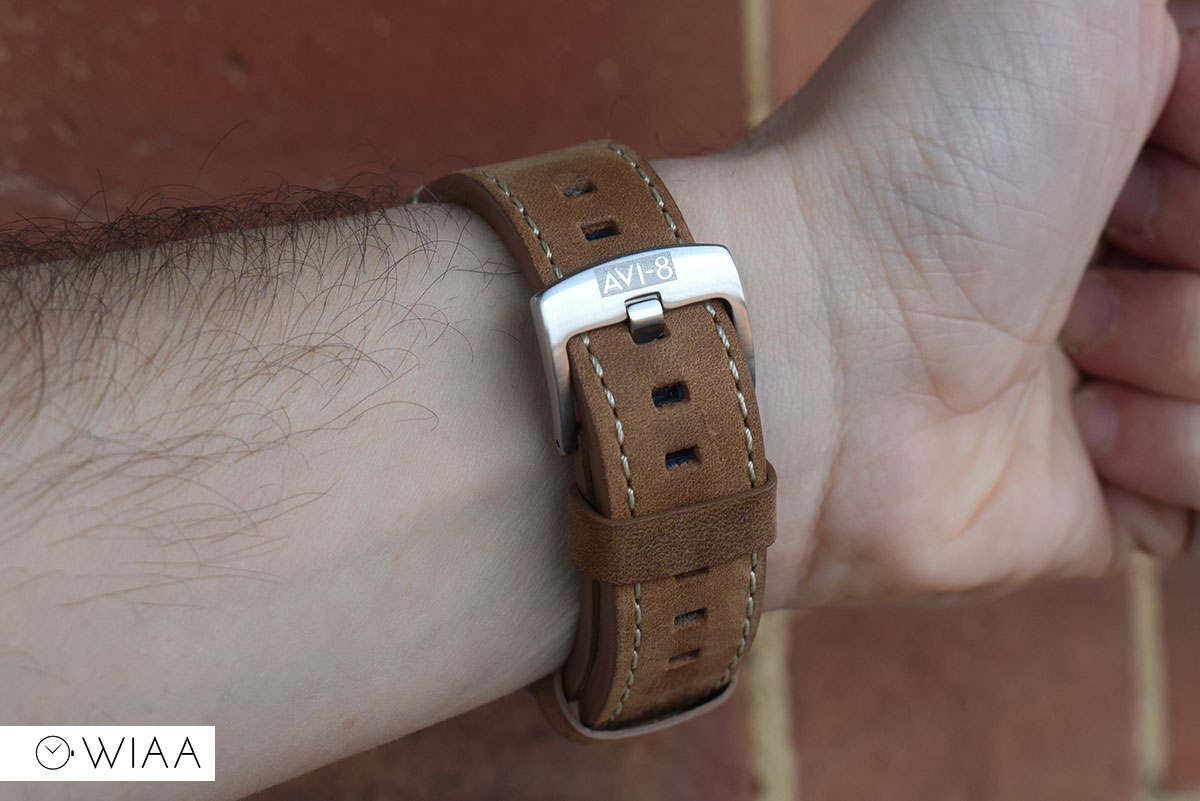
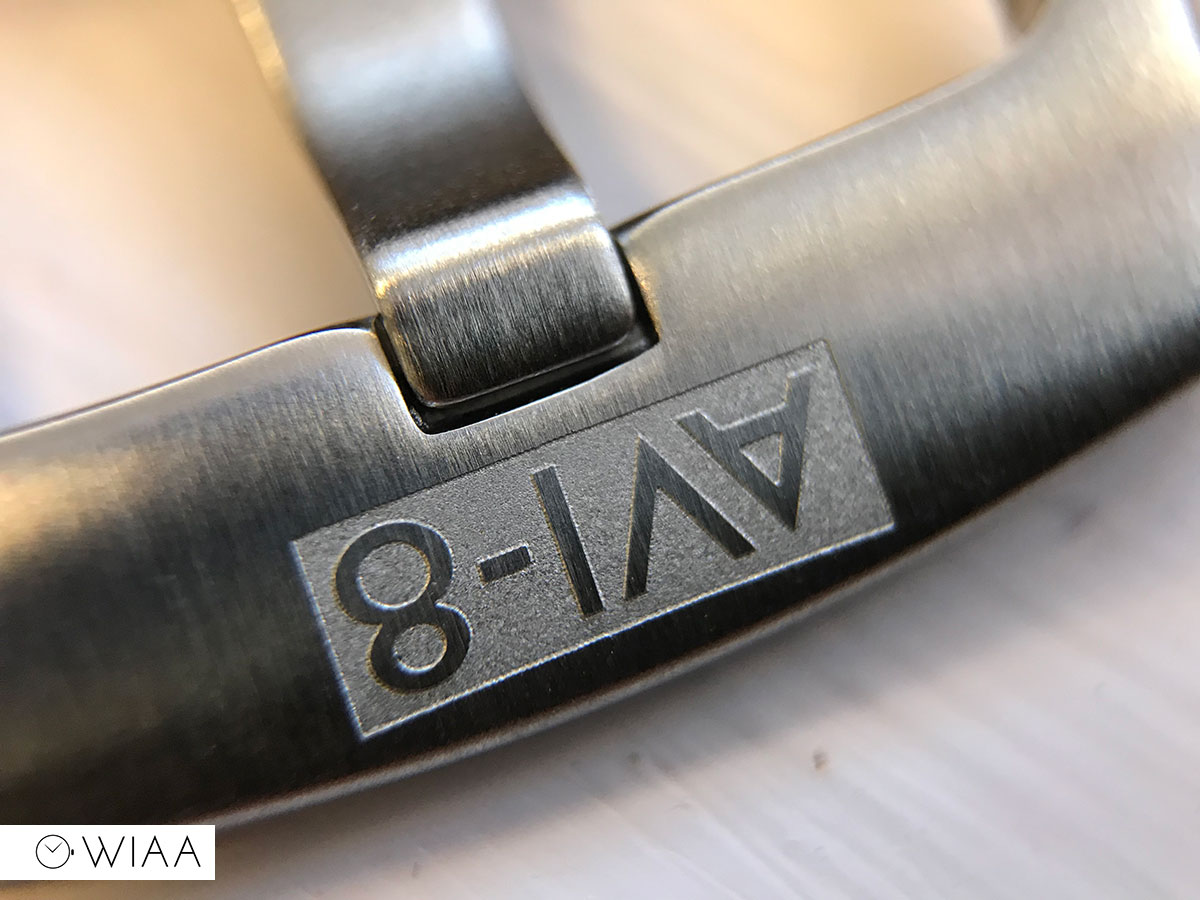
The movement
The movement powering the Avi-8 Centenary collection is the Miyota 8218. Both models have the same custom rotor; skeletonised with the RAF roundel in the centre.
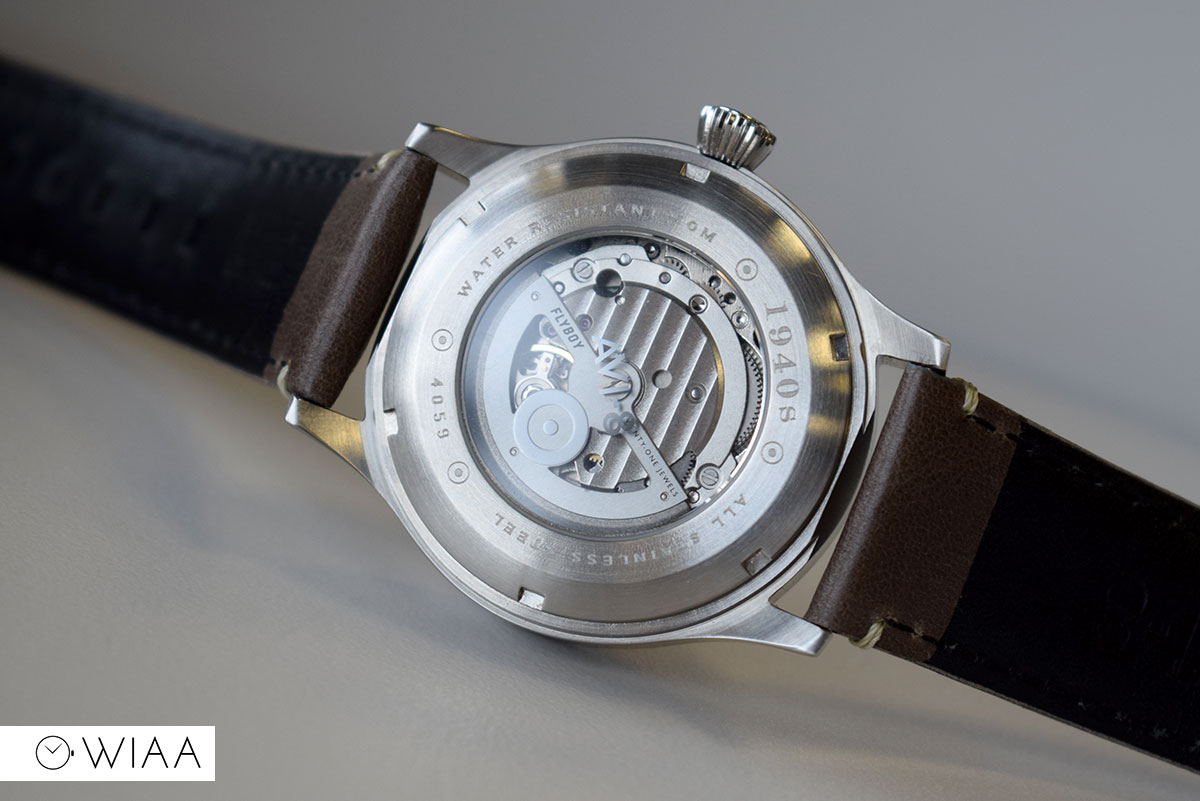
Specs include 21 jewels, 21.6k bph, ~40 hours power reserve, small seconds at 4, and date. However, it does not have a hacking seconds hand, so there’s no way to set it perfectly.
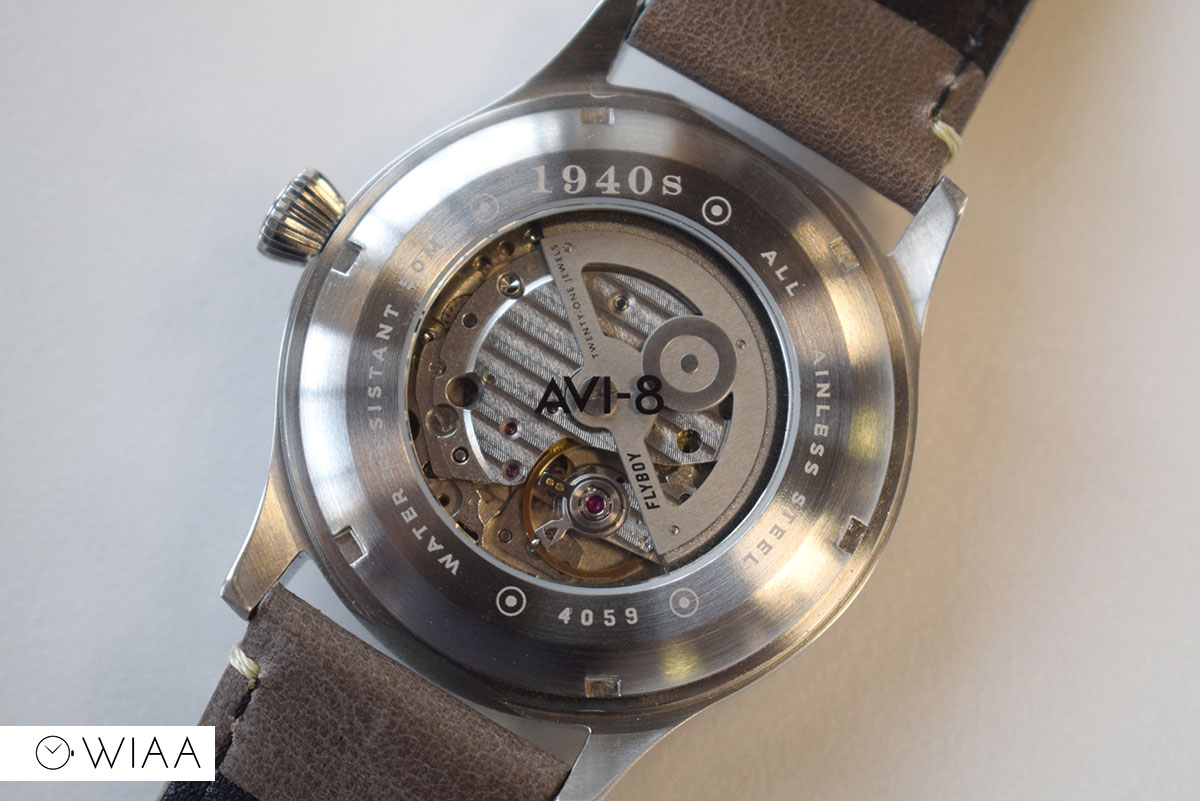
The regulation is varied; the 1920s comes in at +23.1 sec/day; the 1940s at +3.6 sec/day. There’s quite a difference there – hopefully all will productions models will be well regulated but this suggests that might be a bit of a gamble. That’s not to say that the 1940s is extremely accurate of course.
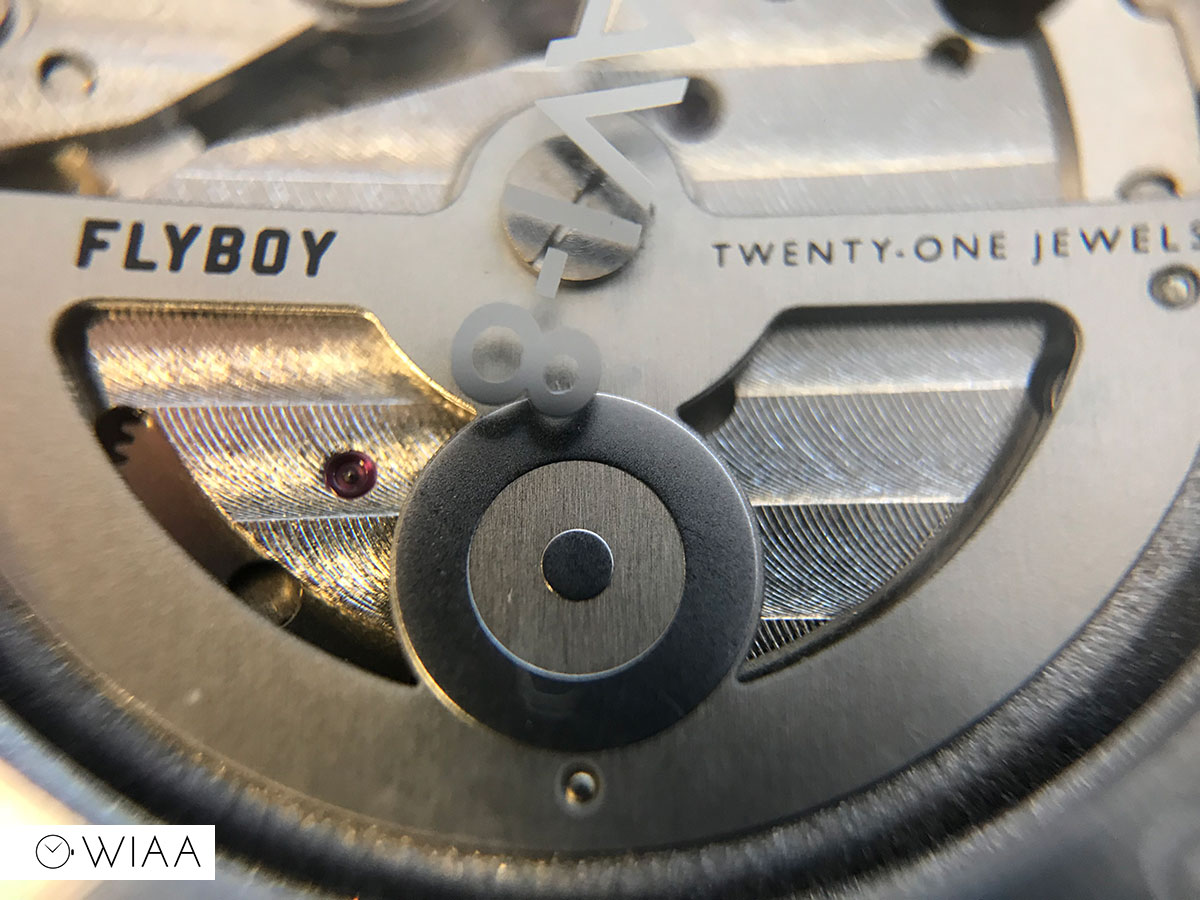
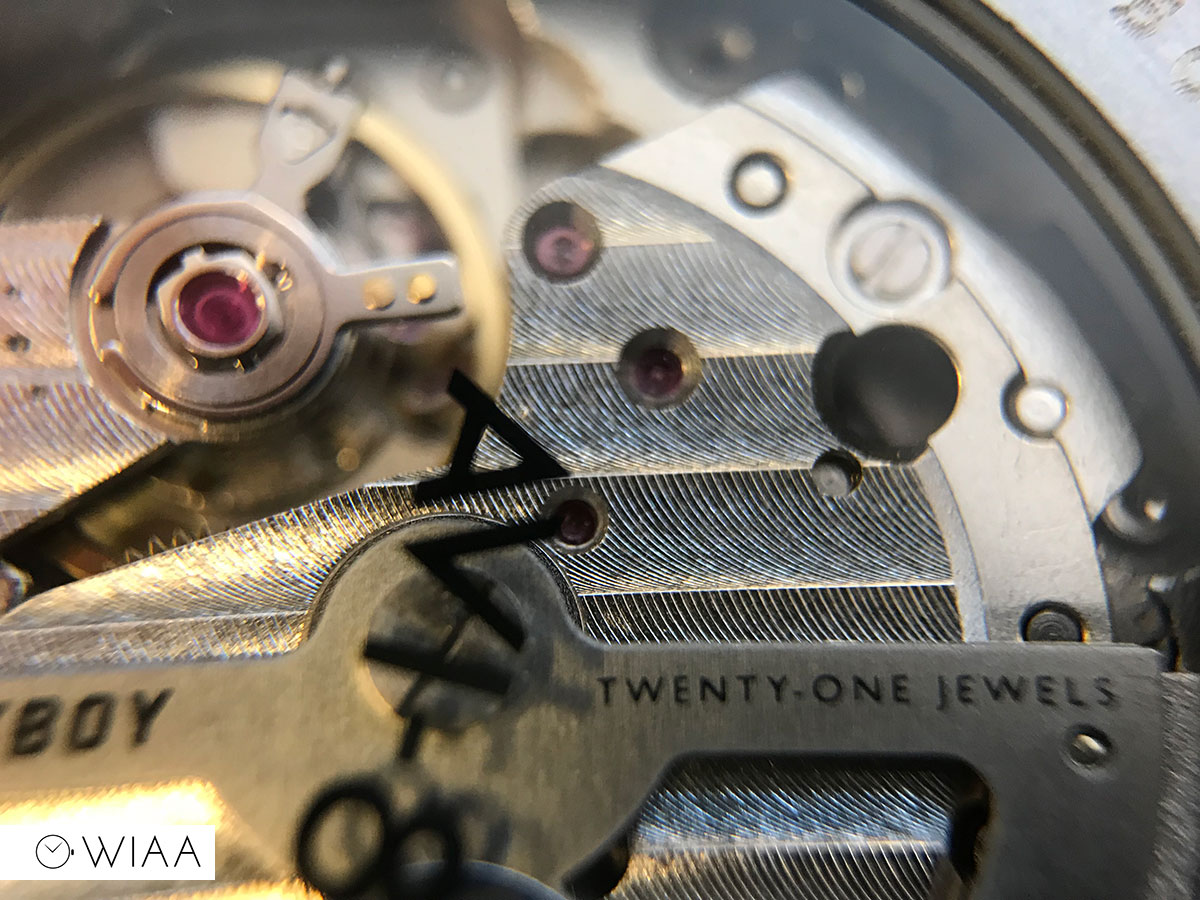
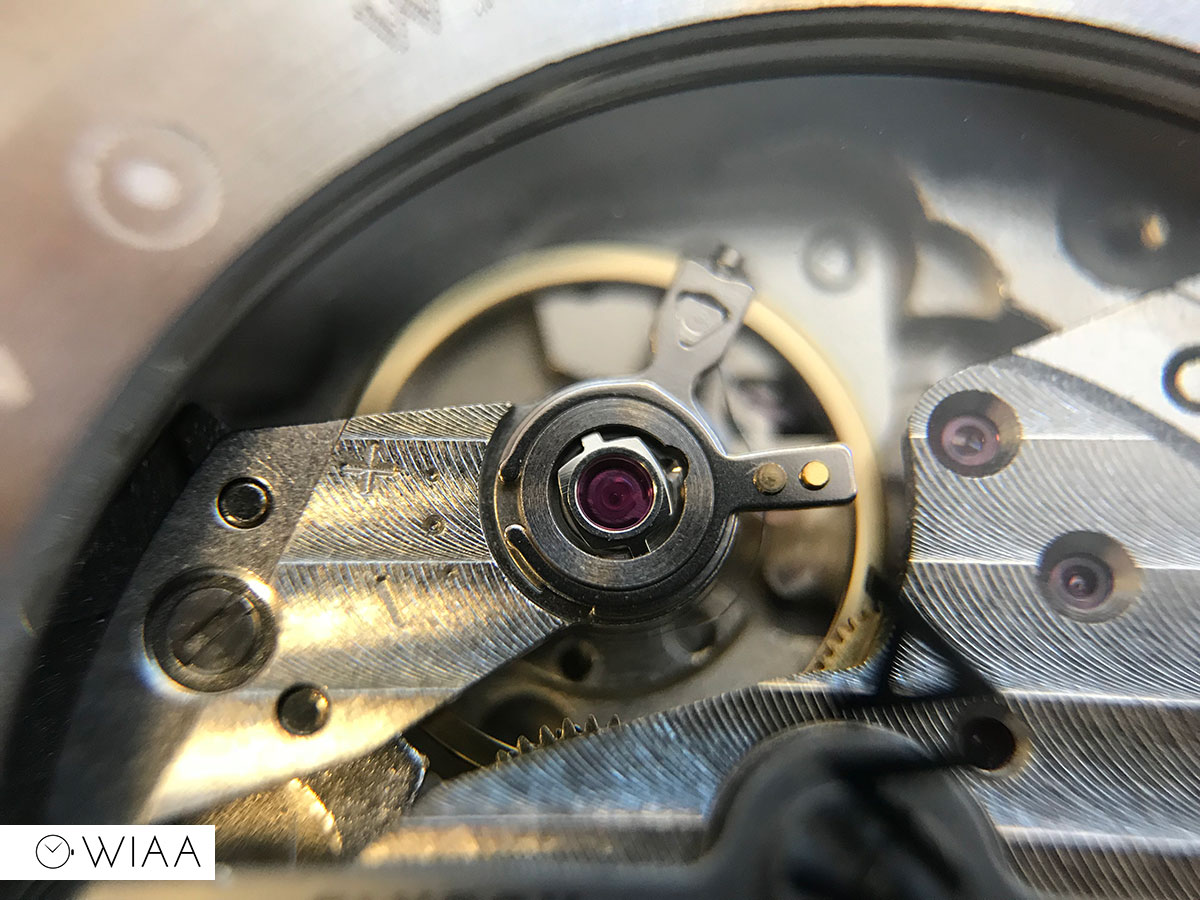
Final comments
I’m really pleased to see Avi-8 being much more sensible with their pricing. Since their initial release, their quality and specs have improved, whilst their RRPs have dropped. No complaints there from me.
For £249, the Centenary collection offers a decent amount of watch for the money. I like the concept of the four “generations”, with each one mimicking the styles of that period: it’s sure to mean that there’ll be one that appeals to everyone. There’s no sign of any sort of cost-cutting either despite the amount of custom elements across the models, with the cases and dials all pretty flawless and accurately constructed.
I’m looking forward to seeing the other two models (1960s and 1980s), but in the meantime these two certainly look the part, feel good and offer good value for money – especially being that you can get a discount if you signup now.
